demographic dividend
description: the economic growth potential that can result from shifts in a population's age structure, mainly when the share of the youth and elderly dependents decreases
40 results

Losing Control: The Emerging Threats to Western Prosperity
by
Stephen D. King
Published 14 Jun 2010
Such was the case in the UK in the nineteenth century and in East Asia over the last fifty years. High rates of economic growth per capita were partly led by productivity, but also supported by the demographic dividend. The demographic dividend is like a surfer’s wave. The wave lifts the surfer high up, it provides a moment of excitement in the surfer’s life but, eventually, it fades away. Demographic dividends don’t occur quite so frequently as the surfer’s wave but they have a similar effect: they temporarily raise the growth rate of an economy. Unlike surfers’ waves, though, they can persist for many decades.
…
A more likely explanation, in my view, is that Latin American economies had major problems with property rights, inflation and openness, thereby reducing incentives both to save and to trade.4 For the developed world, the problem is not so much the inability to jump onto a demographic wave but, instead, working out what to do when it’s time to jump off. No longer are these nations benefiting from a demographic dividend. Instead, their leaders should be worrying about a demographic deficit. The quandary is best expressed through the use of ‘dependency ratios’, defined as the ratio of the sum of the population aged between zero and fourteen (below working age) and that aged sixty-five and above (retirees) to the population aged between fifteen and sixty-four. While the demographic dividend is at work, the dependency ratio declines. As the wave crests, the ratio begins to rise, signalling the threat of a demographic deficit.
…
(i), (ii) Permanent Income Hypothesis (i) Persia (i), (ii) Philippines (i), (ii), (iii) Pike, Rob (i) Pingali, Prabhu (i) plague (i), (ii) Plaza accord (i) pogroms (i), (ii) Poland (i) political economy inequalities (i) education (i) the emerging gap (i) emerging nations and income inequality in the developed world (i) food shortages (i) globalization (i) living with inequality (i) new modes of distribution (i) not getting just rewards (i) a three-country model (i) too much domesticity (i) United Kingdom (i) winners and losers (i) market forces (i) return of political economy (i) scarcity (i) state capitalism (i) politics (i), (ii), (iii), (iv), (v) Ponzi schemes (i) population ageing anarchy in capital markets (i), (ii) command over limited resources (i) demographic dividends and deficits (i), (ii), (iii), (iv) globalization (i) government debt (i) Japan (i) migration (i), (ii), (iii), (iv), (v) nationalism (i) pensions and healthcare (i) political economy and inequalities (i), (ii) savings (i) trade (i) population demographics China (i), (ii) demographic dividends and deficits (i) demographic dynamics (i), (ii) globalization (i), (ii) infant mortality (i) Japan (i) migration (i) pensions and healthcare (i) political economy and inequalities (i) scarcity (i), (ii), (iii), (iv), (v) population of working age (i), (ii), (iii), (iv), (v), (vi) porcelain (i) ports (i) Portsmouth FC (i) Portugal (i), (ii), (iii) Potosí (i) poverty globalization (i), (ii), (iii) migration (i) political economy and inequalities (i), (ii), (iii) price stability and economic instability (i) scarcity (i) Spain and silver (i) price stability anarchy in capital markets (i), (ii) political economy and inequalities (i), (ii), (iii), (iv) price stability brings economic instability (i) back to the 1970s (i) defining and controlling inflation (i) emerging economies (i), (ii) inflation as an instrument of income and wealth distribution (i) inflation as a result of currency linkages (i) overview (i), (ii) from stability to instability (i), (ii) we are not alone (i) scarcity (i), (ii), (iii) state capitalism (i), (ii) trade (i), (ii) printing money (i), (ii) privatization (i), (ii) productivity anarchy in capital markets (i) land grabs (i) political economy and inequalities (i), (ii), (iii) population demographics (i), (ii), (iii), (iv) price stability (i), (ii), (iii), (iv), (v) rent-seeking behaviour (i) scarcity (i), (ii), (iii), (iv) Spain and silver (i) state capitalism (i) trade (i) Western progress (i), (ii) profits anarchy in capital markets (i), (ii) price stability (i), (ii), (iii), (iv) scarcity (i), (ii) state capitalism (i) trade (i) property rights population demographics (i) scarcity (i), (ii), (iii) secrets of Western success (i), (ii) the West’s diminished status (i), (ii), (iii), (iv) Prophet Mohammed (i) prostitution (i) protectionism anarchy in capital markets (i), (ii) globalization (i) migration (i) nineteenth century (i) political economy and inequalities (i), (ii), (iii) secrets of Western success (i), (ii), (iii) trade (i) the West’s diminished status (i), (ii), (iii), (iv), (v) Prussia (i) public sector (i), (ii) purchasing power parity (i), (ii), (iii) Putin, Vladimir (i), (ii), (iii) Qu Hongbin (i) racism (i), (ii), (iii), (iv) railways (i), (ii) Rauh, Joshua (i) Rawls, John (i) raw materials (i), (ii), (iii), (iv), (v), (vi), (vii) Reagan, Ronald (i), (ii) real estate (i), (ii), (iii), (iv), (v), (vi) recession (i), (ii), (iii), (iv), (v), (vi), (vii) Reformation (i) regulation (i), (ii), (iii) religion (i), (ii), (iii), (iv), (v) remittances (i), (ii) renminbi (i), (ii), (iii), (iv), (v), (vi), (vii), (viii) rent-seeking behaviour (i), (ii), (iii), (iv), (v), (vi), (vii), (viii) reserve currency (i), (ii), (iii), (iv), (v), (vi), (vii) Reserve Fund for Future Generations (i) reserves see foreign-exchange reserves resources population demographics (i), (ii), (iii) price stability and economic instability (i) scarcity (i), (ii), (iii), (iv), (v), (vi) state capitalism (i) the West’s diminished status (i), (ii), (iii) retirement (i), (ii), (iii), (iv), (v), (vi), (vii), (viii) Ricardo, David (i), (ii), (iii), (iv), (v), (vi) rice (i), (ii) risk (i), (ii), (iii) Rockefeller Center (i), (ii), (iii) Rocket steam locomotive (i) Roman Empire (i), (ii), (iii) Romania (i), (ii), (iii) Rover Group (i) Royal Navy (i), (ii) rural populations (i), (ii), (iii), (iv), (v), (vi) Russian Revolution (i), (ii) Russia/Russian Federation pogroms (i), (ii) political economy and inequalities (i), (ii), (iii) population demographics (i), (ii), (iii) a post-dollar financial order (i), (ii), (iii) price stability and economic instability (i), (ii) Russian default (i), (ii), (iii) scarcity (i), (ii) secrets of Western success (i), (ii), (iii) state capitalism (i), (ii), (iii), (iv) trade (i), (ii), (iii), (iv), (v) the West’s diminished status (i), (ii), (iii), (iv), (v) Saddam Hussein (i) Samsung (i) Samuelson, Paul (i), (ii) sanitation (i), (ii) Saudi Arabia (i), (ii), (iii), (iv), (v), (vi), (vii) savings anarchy in capital markets (i), (ii), (iii), (iv), (v) economic models (i), (ii) political economy and inequalities (i) population demographics (i), (ii), (iii) price stability and economic instability (i), (ii) state capitalism (i), (ii), (iii), (iv) trade (i) the West’s diminished status (i), (ii), (iii) Scandinavia (i) scarcity (i) back to the classical economists (i) faith in the market (i) history (i) opportunity for all (i) overview (i) population demographics (i), (ii) price stability and economic instability (i) technology replication and resource scarcity (i) the West’s diminished status (i), (ii) Wimbledon and the Olympics (i) Schröder, Gerhard (i), (ii) Schumer, Charles (i) science (i), (ii), (iii) SCO see Shanghai Co-operation Organization Scotland (i) Seat (i) Second World War (i), (ii), (iii), (iv) securities (i), (ii), (iii), (iv) Sen, Amartya (i) Seoul (i) Sevilla, Jaypee (i) Shah, Saef (i) Shanghai (i), (ii) Shanghai Co-operation Organization (SCO) (i), (ii), (iii) Shinawatra, Thaksin (i) Shinkasen (‘Bullet’ train) (i) ships (i), (ii), (iii) Siemens (i) Silicon Valley (i) silk (i), (ii), (iii) Silk Road (i), (ii), (iii) silver (i), (ii) Singapore (i), (ii), (iii) Sinopec (i) SIVs see special investment vehicles Škoda (i) slavery political economy and inequalities (i) population demographics (i), (ii), (iii) scarcity (i), (ii) secrets of Western success (i) Spain (i) Slovakia (i) Slovenia (i) Smetters, Kent (i) Smith, Adam (i), (ii), (iii), (iv), (v), (vi), (vii), (viii) Smoot–Hawley trade tariff (i), (ii) smuggling (i), (ii) soccer clubs (i), (ii), (iii), (iv), (v) social security (i), (ii), (iii), (iv), (v), (vi) soft knowledge (i), (ii) software development (i), (ii), (iii) South Korea (i), (ii), (iii), (iv), (v), (vi) South Stream (i), (ii), (iii), (iv) sovereign wealth funds (SWFs) (i), (ii), (iii), (iv), (v) Soviet communism (i), (ii), (iii), (iv), (v), (vi), (vii), (viii) Soviet Union (i), (ii), (iii), (iv), (v) Spain (i), (ii), (iii), (iv) special investment vehicles (SIVs) (i), (ii) specialization (i), (ii), (iii), (iv), (v) spending power (i), (ii), (iii), (iv) spice trade (i), (ii), (iii) sports (i), (ii), (iii), (iv) stagflation (i), (ii) Standard Bank (i), (ii) ‘Starbucks effect’ (i), (ii) state (i), (ii), (iii), (iv) state capitalism indulging the US no more (i), (ii), (iii) migration (i) political economy and inequalities (i), (ii), (iii), (iv) protectionism (i) rise of state capitalism (i) dynamics of excess saving (i) excess savings and command over assets (i) food prices (i) heading East (i) overruling the market (i) ownership versus control (i) rise of Russian power politics (i) rise of sovereign wealth funds (i) sleeping giants no more (i) unwilling sellers (i) who owns what?
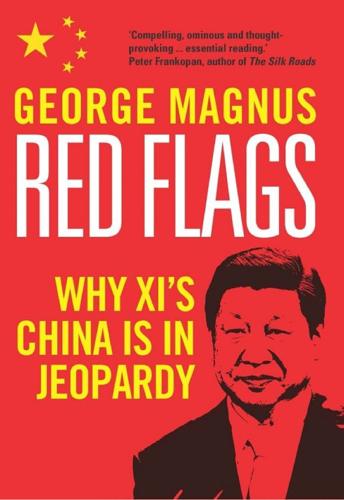
Red Flags: Why Xi's China Is in Jeopardy
by
George Magnus
Published 10 Sep 2018
It is an intriguing question as to why China is ageing so rapidly, especially in relation to other emerging and developing nations. As suggested, though, the combination of the family planning policies adopted in the 1970s and the one-child policy brought the demographic dividend to China much earlier. They lowered child dependency sooner, and have now left the country with premature ageing by comparison. While India’s demographic dividend phase is only just starting – a third of the population is aged under fifteen – China’s began in the early 1970s, and achieved its maximum effect in the quarter century to about 2012. We can judge premature ageing by comparing China with some of its Asian neighbours when they had China’s current income per head many years ago.
…
For example, China’s age structure – or the ratio of over-sixties to those aged 0–14 – is two to three times as high as it was in Japan, South Korea and Taiwan. Moreover, the size of China’s working-age population today is significantly larger than it was for these countries, meaning they were able to look forward to further demographic dividend years. China’s potential for future growth, therefore, is much less by comparison, because the share of younger workers in the economy is substantially lower, and China’s WAP is now declining.6 Another indicator that China’s demographic dividend has been banked is the pattern of unemployment, which has probably been rising. There is a problem of measurement here because, like other emerging countries, China lacks a robust system for recording employment and, especially, unemployment.
…
For a while then, lower fertility, and a more rapidly growing WAP, bring a sort of ‘sweet spot’ to the economy. Incomes, consumption, savings and investment all grow more strongly, and these trends continue for some time before old-age dependency, measured by the number of those aged 15–64 as a share of the WAP, increases. This phase is known as the ‘demographic dividend’. It is open to all countries to exploit, but not all do. China, for example, is the poster country for successful exploitation. Yet, if you cast your mind back to the Arab Spring in 2010, for example, you will recall political and social troubles in countries with favourable demographics.
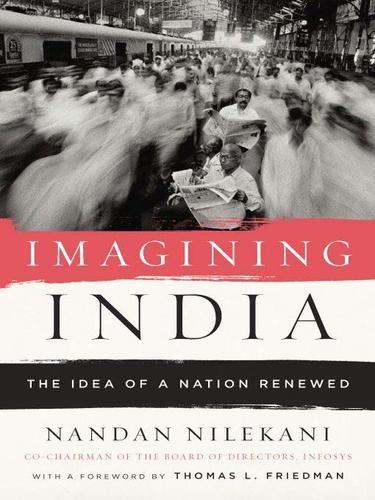
Imagining India
by
Nandan Nilekani
Published 25 Nov 2008
This is also true for developing countries—in India, health progress has triggered its dividend.”m In developed countries, with their already low mortality and fertility rates, a demographic dividend was rare and indicated an unusual event. That event was usually a war. The Second World War—which forced people to postpone having children, and then have them all together in one big wave—led to a baby boom and demographic dividend in the United States. Here, the postwar dividends enabled rapid growth, and it contributed to an estimated 20 percent of GDP growth between 1970 and 2000. In Ireland it was the legalization of birth control that fueled its demographics—there were few infant deaths, but when this deeply Catholic country finally legalized contraceptives in 1979, Ireland’s high fertility rate began to fall rapidly.
…
The single biggest advantage in this context is India’s demographic dividend, which is well-known thanks to the landmark Goldman Sachs BRICs report that came out in 2003. I discuss this demographic opportunity with Roopa Purushothaman, the brilliant and precocious economist—she was twenty-five at the time of the BRICs analysis—who coauthored the report. “We didn’t realize at the time the impact these projections would have,” Roopa tells me, “but the report created waves, and it drew a lot of attention to the potential effects of India’s demographic dividend.” It certainly did—I remember the somewhat premature blowing of trumpets across India when the report was released, and it formed the basis of the ill-fated “India Shining” campaign that the NDA government, up for reelection, launched.
…
In all, Bloom and Williamson discovered, this wave of young workers contributed to as much as one third of East Asia’s economic rise between 1965 and 1990.l “We showed,” David tells me, “that particular kinds of population growth could dramatically drive the country’s growth, not impede it as economists used to believe.” David called this effect the “demographic dividend,” a phrase that has quickly caught on. And with good reason. When demographers went back and looked at previous periods of sustained economic growth from Europe to the United States to Asia, they found that they coincided time and again with similar patterns of large numbers of young people, and fewer dependants.

Grand Transitions: How the Modern World Was Made
by
Vaclav Smil
Published 2 Mar 2021
Palaeogeography, Palaeoclimatology, Palaeoecology 82:187–201. Martin, P.S. 2005. Twilight of the Mammoths. Berkeley, CA: University of California Press. Mason, A. 2005. Demographic Transition and Demographic Dividends in Developed and Developing Countries. Mexico City: UN. https://www.researchgate.net/publication/252403184_Demographic_Transition_and_Demographic_Dividends_in_Developed_and_Developing_Countries/link/5432ee0c0cf225bddcc99892/download Mason, A. et al. 2017. Support Ratios and Demographic Dividends: Estimates for the World. New York: UN. Mateos-Planas, X. 2002. The demographic transition in Europe: A neoclassical dynastic approach. Review of Economic Dynamics 5:646–680.
…
Increasing numbers of children and adolescents during the early stages of the demographic transition raise the total dependency ratio: that is, the number of people younger than 14 and older than 65 years of age per 100 people of working age between 15 and 64 years. Then, as fertilities decline, nations enjoy their demographic dividends due to the rising share of economically active adults. If they are accompanied by effective policies, those periods are highly conducive to unprecedented rates of economic growth and to impressive gains in average quality of life: think of Japan of the 1980s, South Korea of the 1990s, China of the first decade of the 21st century.
…
This trend (by now widely replicated around the world) has further social and economic repercussions ranging from increasing divorce rates to demand for state-supported child care. Two major outcomes of demographic transition that have affected every aspect of economic and social development as well as the quality of the environment have been the unprecedented growth of human populations and the creation of a demographic dividend engendered by a shifting population structure. The time lag between the falling mortalities and natalities created temporary periods of rapid population growth that brought sequentially faster doublings of global population and led to irrational fears about its uncontrolled expansion. As already noted, our best estimates of prehistoric population growth indicate annual rates well below 0.1%, with doubling times extending to a millennium or more.

Them and Us: How Immigrants and Locals Can Thrive Together
by
Philippe Legrain
Published 14 Oct 2020
Even in occupations that don’t require formal qualifications, having a diversity of experiences and perspectives can improve team performance. Allowing for all that, as the IMF study did, an influx of low-skilled migrants tends to boost local living standards significantly. And young migrants also provide a hefty demographic dividend, as the next chapter explains. 12 DEMOGRAPHIC DIVIDEND It is time for the exercise class at Shintomi nursing home in Tokyo. The elderly residents, seated in a semi-circle, follow the fitness instructor’s movements intently. Left arm forward – and clasp. Right arm forward – and unclasp. Left arm up – and clasp. Right arm up – and wave.
…
PART TWO: PEOPLE ON THE MOVE 2 A Very Brief History of Migration 3 Post-1945 Migration 4 The Current Picture 5 Future Flows PART THREE: ECONOMIC DIVIDENDS 6 The Lottery of Life 7 Dynamism Dividend 8 Diploma Dividend 9 Deftness Dividend 10 Diversity Dividend 11 Drudgery Dividend 12 Demographic Dividend 13 Debt Dividend 14 Development Dividend PART FOUR: CULTURAL CHALLENGES 15 Cultural Cornucopia 16 Irregularity 17 Identity 18 Illiberalism 19 Integration PART FIVE: SEEKING SOLUTIONS 20 Persuading Sceptics 21 Conclusion. Open Future(s) Notes ACKNOWLEDGEMENTS Writing a book is an intensely individual endeavour, and yet Them and Us would not have been possible without the help and support of many other people.
…
They may simply be young and hard-working, a huge bonus for ageing societies with shrinking local workforces. Young migrant workers complement older, more experienced local ones, help pay for – and care for – the growing ranks of pensioners and support population numbers, thus spurring investment and growth. That is the demographic dividend. Newcomers tend to pay more in taxes than they receive in public services and welfare benefits, subsidising locals and helping to service government debt. That is the debt dividend. Last but not least, allowing people to move is also the best form of development aid. It transforms the life chances of migrants and their children, while the money they send home tends to be spent more effectively than official aid.
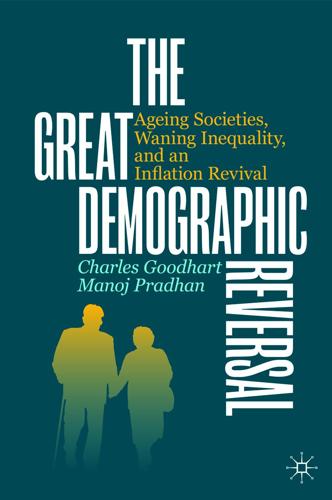
The Great Demographic Reversal: Ageing Societies, Waning Inequality, and an Inflation Revival
by
Charles Goodhart
and
Manoj Pradhan
Published 8 Aug 2020
In 2050, 44% of the world’s population will live in relatively aged countries, with at least 20% of the population aged 60 years or over, and one in four people will live in a country where more than 30% of people are above age 60. 3.2 The Demographic Cycle: Uniform Geographically, Lopsided Economically The World Bank provides a useful classification of the demographic cycle by splitting economies into those where the demographic dividend has already passed by to those that have yet to live through theirs. The four sets of economies—pre-dividend, early-dividend, late-dividend and post-dividend—capture a global economy in demographic transition. The differences in fertility and longevity among these economies help explain their labels. Countries with high fertility rates and low longevity are the ones that have yet to reap their demographic dividend. The expected fall in fertility rates and the increase in longevity, following the pattern in the rest of the world, will create the demographic dividend in the future.
…
13 Future Policy Problems: Old Age and Taxes, and the Monetary-Fiscal Clash 14 Swimming Against the (Main)Stream Postscript: Future Imperfect After Coronavirus References Index List of Diagrams Diagram 1.1 An ageing world: working age population (Mil) is falling; working age population growth (yearly increase) is slowing Diagram 1.2 Trade union density has been falling for decades now Diagram 1.3 Advanced economies inflation: Durable goods and services (year on year = %Y, averaged over 3 years = 3Yr Ave) Diagram 1.4 Advanced economies public debt (% of Gross Domestic Product) is going to rise even further Diagram 1.5 Long-term government bond yields: 10-year maturity Diagram 1.6 The number of people with dementia (per 1000 population, all ages) will rise sharply across the advanced economies Diagram 1.7 Labour share of income in advanced economies Diagram 1.8 US federal debt held by the public was projected to rise sharply even before the pandemic Diagram 1.9 Projections of UK public sector net debt Diagram 2.1 Reforms and exports have led to sustained surges in growth Diagram 2.2 “The surprisingly swift decline in US manufacturing employment” Diagram 2.3 China credit growth surged in the early 90s and after the Great Financial Crisis Diagram 2.4 Capital inflows were offset at the border, leading to huge foreign exchange reserves Diagram 2.5 China’s working age population is shrinking; Urban population is now 60% of the total Diagram 2.6 Like Japan, China will see a mathematical rebalancing Diagram 3.1 Fertility (children per woman) is falling sharply in the EMEs, having already fallen in the AEs Diagram 3.2 Life expectancy at birth (years) is rising globally Diagram 3.3 Dependency ratios rising in the AEs, mixed among the EMEs (per 100) Diagram 3.4 Life expectancy (in years) and the geographical distribution of the demographic dividend Diagram 3.5 Dependency ratio (per 100) in the different demographic cycles, % of world population Diagram 3.6 Gross domestic product contributions (% of global) in the different demographic cycles Diagram 3.7 Participation rate (% of population) has already risen sharply in the 55–64 year cohort in the AEs Diagram 3.8 Pension repayment rate and the participation rate are inversely correlated Diagram 3.9 Effective retirement age (years) has risen by less than life expectancy Diagram 4.1 As people live longer, the burden of dementia is bound to increase Diagram 4.2 Public spending on long-term care varies among rich nations Diagram 4.3 UK: Average age of parents at the birth of their child Diagram 4.4 Mean Age of Women at the Birth of their First Child (Age) Diagram 5.1 The household savings rate falls as the dependency ratio worsens Diagram 5.2 Proportion of population aged over 65 Diagram 5.3 Older people less likely to move in the United States Diagram 5.4 And in the United Kingdom, too Diagram 5.5 UK: average age of parents at the birth of their child (age) Diagram 5.6 Mean age of women at the birth of first child (age) has risen across the AEs Diagram 5.7 The profit share of gross domestic product has been rising, particularly after the GFC Diagram 5.8 Gross fixed capital formation (as a % of gross domestic product) has been stagnant in the AEs, but not in China Diagram 5.9 Corporate sector net saving (% of gross domestic product) will move further into deficit Diagram 5.10 General government budget balances (shown here as a % of GDP) have been in deficit persistently Diagram 6.1 Consumption rises over the life cycle Diagram 6.2 Health expenditure rising globally, mostly due to high income economies Diagram 6.3 Public expenditures on pensions will continue to rise Diagram 6.4 Life expectancy less effective retirement age is rising across the AEs Diagram 6.5 Wedge (spread) between yields on corporate AAA bonds and on BBB bonds Diagram 7.1 Gini coefficient of disposable household income across the OECD Diagram 7.2 Fiscal redistributive impact is still large but declining in some OECD countries Diagram 7.3 Cumulative change in real weekly earnings of working age adults aged 18–64, 1963–2017 Diagram 7.4 Changes in occupational employment shares among working age adults, 1980–2016 Diagram 7.5 Ratio of remuneration between CEOs and average workers in world in 2014, by country Diagram 7.6 Median cash incentive payments for FTSE 100 lead executives 1996–2013 Diagram 8.1 Keynesian reverse-L supply curve Diagram 8.2 Achieving the political optimum on the Phillips curve Diagram 8.3 Stagflation in advanced economies Diagram 8.4 Trade union density has been falling since around 1980 Diagram 8.5 The horizontal Phillips curve, 2006–2018 Diagram 8.6 Working days lost to strikes (Mil.); Work stoppage workers involved (Mil.)
…
The expected fall in fertility rates and the increase in longevity, following the pattern in the rest of the world, will create the demographic dividend in the future. By contrast, post-dividend economies are the ones where fertility rates have plummeted and remain near their lows, and longevity too has converged to the global peak (Diagram 3.4). Diagram 3.4Life expectancy (in years) and the geographical distribution of the demographic dividend (Source World Bank) At first glance, the current distribution of countries across these categories is fairly widely spread—which seems to paint a promising picture for the global demographic landscape. In fact, however, world population growth in 2040 will be higher than in the developed economies or in our categorisation of the emerging economies, because there is yet another category of countries, defined as least-developed regions and countries, mostly in Africa, where population growth is predicted by the UN to remain much higher through 2040.
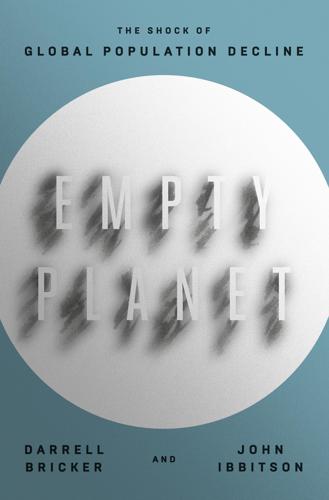
Empty Planet: The Shock of Global Population Decline
by
Darrell Bricker
and
John Ibbitson
Published 5 Feb 2019
Improved health care after the Korean War, coupled with a birth rate of about 6.0—typical of a rural, impoverished society at the time—brought on Korea’s own baby boom, with the population doubling from twenty million to forty million between 1950 and 1985. This enormous cohort of the young proved to be Asia’s “demographic dividend,” as it was known: a huge number of eager young workers for the factories that produced the cheap transistor radios and their ilk that powered the first wave of growth. Some critics insisted that a large, young population was the only reason Asia soared in the last decades of the twentieth century, but that’s bunk—see the Philippines and most of Latin America for examples of a demographic dividend squandered.127 But Asian governments feared rather than welcomed their millions of young workers.
…
Eventually, people fervently hope, the peninsula will be reunited, instantly boosting the population by twenty-five million. And the North Korean birthrate is 2.0, if that country’s statistical agency is to be believed—roughly replacement rate and much higher than South Korea’s. But whatever demographic dividend unification might bring would be overwhelmed by the challenges of integrating an impoverished and brainwashed (by their own government) population struggling to acquaint itself with the modern world. The demographic dividend that allowed parts of Pacific Asia to leap ahead, bringing previously unimagined wealth and security to their people, is about to become the demographic drag, as societies age, health care and pension demands increase, dependency ratios move in entirely the wrong direction, and the younger generation struggles to make ends—their own and their parents’—meet.
…
.: Middle East Institute, 30 July 2015). http://www.mei.edu/content/article/education-key-women’s-empowerment-saudi-arabia 447 “Decline in Fertility Rate Among Palestinians, Says Statistics Bureau,” wafa, 29 December 2016. http://english.wafa.ps/page.aspx?id=gedjk6a51964762047agedjk6 448 Bessma Momani, Arab Dawn: Arab Youth and the Demographic Dividend They Will Bring (Toronto: University of Toronto Press, 2015). Quote derived from a summary of the book presented by the author at an event sponsored by the Brookings Institution, 28 December 2015. https://www.brookings.edu/events/arab-dawn-arab-youth-and-the-demographic-dividend-they-will-bring/ 449 Haas, “A Geriatric Peace? The Future of U.S. Power in a World of Aging Populations.” 450 Quote Investigator. http://quoteinvestigator.com/2012/11/11/exhaust-alternatives 451 National Population Projections Team (report prepared by Nora Bohnert, Jonathan Chagnon, and Patrice Dion) Population Projections for Canada (2013 to 2063), Provinces and Territories (2013 to 2038) (Ottawa: Statistics Canada, 2015). http://www.statcan.gc.ca/pub/91-520-x/91-520-x2014001-eng.pdf 452 New Projection of Germany’s Population by 2060 (Berlin: Federal Statistics Office, 2015). 453 John Bingham, “Average Life Expectancy Heading for 100,” Telegraph, 15 January 2015. http://www.telegraph.co.uk/news/politics/11348561/Average-life-expectancy-heading-for-100.html 454 “Biologist Believes Average Life Span Will Reach 150 by End of Century,” Toronto Star, 7 September 2015. https://www.thestar.com/life/health_wellness/2015/09/07/biologist-predicts-average-life-span-will-reach-150-by-end-of-century.html 455 Casey and Galor, “Is Faster Economic Growth Compatible with Reductions in Carbon Emissions?”
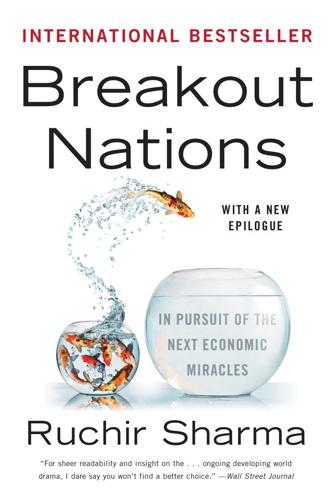
Breakout Nations: In Pursuit of the Next Economic Miracles
by
Ruchir Sharma
Published 8 Apr 2012
At least until the last months of 2011, when growth forecasts dipped below 7 percent and rattled investor confidence, the Indian elite seemed more focused on how to spend the windfall than on working to make sure the rapid growth actually happens. The best example of this rosy thinking was the way the ongoing baby boom in India has been transformed from a “time bomb” into a “demographic dividend” in the minds of the elite. Until the 1990s the Indian government was still working hard to rally the nation against the dangers of overpopulation, but that fear has melted away, based on the argument that a baby-boom generation of new workers helped fuel China’s rise and will do the same for India.
…
People could not get that song, which rhymes neatly in Hindi, out of their heads. In the last decade, however, the government dropped this theme, and the overwhelming consensus holds that population growth means more workers who can drive economic growth. The shelves of Indian libraries groan with research reports that argue for the inevitable wonders of this demographic dividend, citing the Chinese example as precedent, but ignoring the huge challenge of educating all the young people and expanding the job opportunities available to the ten million entering the labor force every year. Yes, a growing pool of young workers can be a huge advantage, but only if a nation works hard to set them up for productive careers.
…
The growth in demographic analysis as a global industry is striking. I can’t count the number of demographers who have come to my offices in recent years, all offering some spin on the basic idea that population growth drives economic growth, and proffering tips on which nations will enjoy the biggest “demographic dividend.” These fads come and go on Wall Street. In the 1970s and 1980s, every investment house had its own political economist, as a kind of coup and war forecaster, but they were gradually phased out in the 1990s as wars became more localized and political stability spread in the developing world.
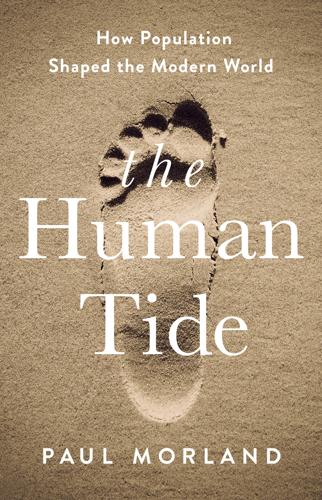
The Human Tide: How Population Shaped the Modern World
by
Paul Morland
Published 10 Jan 2019
A still poor but rapidly rising population is making the world increasingly reliant on India for its contribution to global economic growth. With the decline in its fertility rate, India is set to enjoy a demographic dividend as China’s fades. Both India and China undertook cruel and unnecessary coercive steps to curb population as well as sensible ones allowing women to make their own choices. In part because of its slower economic development, in part because of its culture, India has the prospect of a long demographic dividend to enjoy, while China faces imminent challenges of a declining workforce and an ageing population. Sub-Saharan Africa: The Final Frontier The human tide takes some surprising turns.
…
In the case of Japan as in that of the West, economic and population expansion arrived more or less simultaneously, and in the case of Japan, as in the case of Western countries, GDP rose as a result of both rising population, rising productivity and rising per capita income. This was true both after 1868 when Japan opened itself to the world and after 1945 when it enjoyed the demographic dividend of a fast-growing population but falling fertility, allowing increased workforce participation. What is striking was the way the country’s economic dynamism seemed to dry up at precisely the point when the share of its workforce-age population peaked.50 Japan now faces unprecedented pressures on its pensions system, which was significantly reformed in 2004.
…
Whereas the developed world is used to high dependency ratios due to the rising number of elderly, in the case of these countries it has been due to the high number of the young requiring the investment of care and education. Sharply falling fertility rates in the Middle East should in principle provide their populations with an opportunity to make economic progress as the dependency ratio falls from over ninety in 1980 to an (estimated) under sixty by 2020.42 This so-called ‘demographic dividend’ is often seen to apply where the number of children relative to the workforce reduces; this may in part be responsible for the economic rise of Turkey, and it has been claimed as a factor in countries such as Japan and Indonesia. Again, it is difficult to unpick causally because it is often precisely those countries where economic and social progress is being made that are those witnessing falling fertility rates, and cause cannot always be separated from effect.

The Rise and Fall of Nations: Forces of Change in the Post-Crisis World
by
Ruchir Sharma
Published 5 Jun 2016
In a few other populous countries, the number of working-age people is growing at a rate near or above 2 percent, including the Philippines and some emerging countries with economies too small to make the top twenty, such as Kenya, Nigeria, Pakistan, and Bangladesh. These populations are also forecast to keep growing rapidly for the next decade, so they have a demographic edge on the competition. For them, the trick is to avoid falling for the fallacy of the “demographic dividend,” the idea that population growth pays off automatically in rapid economic growth. It pays off only if political leaders create the economic conditions necessary to attract investment and generate jobs. In the 1960s and ’70s, rapid population growth in Africa, China, and India led to famines, high unemployment, and civil strife.
…
But no economic dividend resulted. In the early 2010s many Arab countries suffered from cripplingly high youth unemployment rates: more than 40 percent in Iraq and more than 30 percent in Saudi Arabia, Egypt, and Tunisia, where the violence and chaos of the Arab Spring began. In India, where hopes for the demographic dividend have also been sky high, ten million young people will enter the workforce each year over the next decade, but lately the economy has been creating less than five million jobs annually. Though discussions of rapid population growth tend to focus on big emerging countries, a rising number of workers is also critical to economic growth in developed countries.
…
As the dependency ratio declines, with more people entering the workforce and earning an independent living, a country’s income increases, and that creates a greater pool of capital, which can be used to invest in ways that further raise productivity. According to the demographer Andrew Mason, this secondary demographic dividend was an important boost to the economic growth rates of East and Southeast Asia, where saving rates are relatively higher and the workforce has been relatively large.5 Furthermore, a more experienced labor force also tends to be more productive. The best-positioned countries are those taking steps to keep older people in the workforce and out of the “dependent” population.
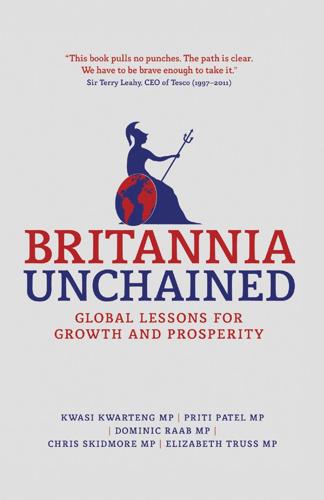
Britannia Unchained: Global Lessons for Growth and Prosperity
by
Kwasi Kwarteng
,
Priti Patel
,
Dominic Raab
,
Chris Skidmore
and
Elizabeth Truss
Published 12 Sep 2012
While the number of teenage mothers or those in their twenties has fallen, the number of babies born to the over-40s has tripled in the past 30 years.60 In the last ten years alone, the number of births to the over-30s has gone up by 22 per cent.61 As the whole world ages, Britain will remain a relatively young country. Past experience suggests that this can only be healthy. More young people means more minds to create new ideas and generate wealth, more opportunities and creativity, and more help to look after the old. Much of the growth of the mid twentieth century across the world came from a ‘demographic dividend’, as the population surge from the baby boomers reached the workplace and helped drive the rest of the economy. Imagine the experience of someone born and growing up in the internet age. They are at ease in a globalised world, as used to discussing last night’s TV with friends from Hong Kong as Hereford.
…
Index Compiled by Sue Carlton 9/11 terrorist attacks 29 Addison Lee minicabs 62, 63 Airbnb 98 Allensbach Institute 40 America see United States Amin, Idi 9 antisemitism 86 Antrobus, Lavern 75 AOL 81 Apple 60, 81, 91, 105 The Apprentice 75 apprenticeships 74 ArcelorMittal 73 Argentine military junta, defeat of (1982) 10 ARM 68 austerity measures 3, 36, 66 Australia 30, 32–3, 65, 88, 111 Bakewell, Joan 109–10 Balls, Ed 25–6, 27, 28, 29, 30, 31, 33 Balls, Michael 25 Bank of England independence 25 see also central banks bankruptcy 91, 92 see also business, and failure banks Australian 33 bailouts 12, 33 Canadian 4, 13, 33–5 Chinese 95 and mathematical knowledge 45, 47–8 Bar-Natan, Bernard 78–80, 84 Basel II regulations 47 Beleza Natural 103–4 Beuchler, Simone 102 Black Wednesday 25 Blair, Tony 17, 24, 27, 29, 115 Blanchflower, David 20 boom and bust, end of 25, 27, 30, 115 Branson, Richard 97 Brazil 5, 100–6, 112, 113, 115 crime 102–3, 105 democratic elections 104 demographics 104 education system 105 and global recession 101 and international investment 105 military coups 104 Olympic Games (2016) 101–2, 103 and optimism 5, 100–2, 103, 105, 106, 111 poverty and inequality 102, 104–5 productivity 105, 115 BRIC (Brazil, Russia, India, China) economies 10 see also emerging economies Britain see United Kingdom British Chamber of Commerce survey (2011) 87 British film industry 97 British Social Attitudes survey 109 Brittan, Samuel 20 Brown, Gordon 17, 24, 25, 26–9, 30, 33, 36 Buckley, Sir George 58 business 2, 3–4 enterprise zones 88 and failure 91–2, 95–6, 99 and informal economy 88–9 and regulation 87–8, 89 Callaghan, James 24, 114 Cameron, David 20 Campbell, Kim 16 137 138 Britannia Unchained Canada 4, 12, 13–19, 32, 33–7 banks 4, 13, 33–5 cutting deficits 4, 14–18, 30, 32, 37 diversified economy 34 education 36, 37 financial regulation 34–5 points-based immigration system 36 spending cuts 17–18 CDOs (collateralised debt obligations) 47, 48 CDSs (credit default swaps) 47 celebrity culture 4, 74–5, 76, 115 central banks independence 25, 27 see also Bank of England Centre for Economics and Business Research 101 Centre for Social Justice 67, 70, 73 Charles II, King of England 21 childcare, cost of 71 Chile 30, 32 China 10, 46, 53, 113, 115 aging population 106, 107 education 43, 44, 113 Chinese students in UK 58–9, 72 enterprise culture 95 informal economy 89 patent registration 54 Chrétien, Jean 16–18, 35, 36 chutzpah 81–2 Cidade de Deus slum 100 City of God (2002) 100 Clark, Joe 15 Clarke, Ken 27–8 Clinton, Bill 25 ComRes poll 87 Confederation of British Industry 74 Conservative Party (Canada) 35 consumer law 89 Cool Britannia 10, 115 Costa, Edivan 103 credit card debt 12, 30 Crosland, Anthony 26 Crow, Bob 63 Crowdcube 98 crowdfunding 98 Darling, Alistair 111 Day Care Trust 71 De Gaulle, Charles 8, 105–6 Deak, Lex 92 debt 10, 12, 19–24, 30–3, 115 debt delusion 19–20, 23 and default 21–2, 101 and economic growth 21, 22, 23–4 and financial crises 22–3 and future generations 67, 70 and responsible spending 24, 33 deficits 23–4 see also United Kingdom (UK), and deficit; Canada, cutting deficits; debt delayed gratification 71–2 demographics 106–11 population aging 32, 100, 101, 106–7 population growth 9, 113 Devey, Hilary 75–6 Dickson, Julie 35 Diefenbaker, John 15 dot com bubble 11, 29, 94 Dragons’ Den 75 Duncan, Arne 38 Duncan, Emma 57 Duncan-Smith, Iain 75 Dyson, , James 97 Economic Freedom of the World (Cato Institute) 36 economic growth 113 and demographic dividend 108 unsustainability of 9, 10 Economic Stabilisation Plan (Israel) 83 Edison, Thomas 91 education 4–5, 38–60 comparing school systems 38–41 cramming establishments 43–4 and graduate jobs market 44–5 and hard work 50, 57, 59 Index and parental aspiration 57, 59, 72–3 students choosing easier subjects 42–3, 45, 46–7 and work experience 43, 74 see also United Kingdom (UK), education; Programme for International Student Assessment (PISA) Edward III, King of England 21 emerging economies 3, 11, 113, 115 and scientific development 52, 53 and women 50 see also Brazil; China; India; Mexico; South Korea Enron 92 enterprise zones 88, 94 entrepreneurship Brazilian shantytowns 103–4 and courage 98–9 in US 90, 93–4, 96–7 and work ethic 67–8 see also Israeli entrepreneurial culture Erlich, Yigal 83, 84–5 Eurozone crisis 3, 12, 21, 37, 114 Exchange Rate Mechanism 24–5, 115 Facebook 55, 76, 95 failure as part of business 91–2, 95–6, 99 see also risk Famine, 1975!

Stakeholder Capitalism: A Global Economy That Works for Progress, People and Planet
by
Klaus Schwab
Published 7 Jan 2021
Before the COVID crisis, they had relatively lower public debt levels of around 50–55 percent,22 with much of it invested in infrastructure (though during the COVID crisis, the debt level increased by about 10 percent). Some of these countries can be considered to have a demographic dividend, meaning a population with an average age in the low twenties, that is, heavily skewed toward younger generations. This type of population pyramid could make repaying debt more feasible if the coming surge in their working-age population is complemented by an equally high surge in available jobs. (The latter, however, has proven problematic in some Arab and African economies. Faced with a job shortage, a demographic dividend can rather turn into a ticking time bomb.23, 24) How some ageing Western countries are supposed to repay their debts in a slowing economy, though, is highly questionable.
…
For the IIF estimate of Q1 2020, see https://www.iif.com/Portals/0/Files/content/Research/Global%20Debt%20Monitor_July2020.pdf. 18 “Coronavirus Lifts Government Debt to WWII Levels—Cutting It Won't Be Easy,” The Wall Street Journal, August 2020, https://www.wsj.com/articles/coronavirus-lifts-government-debt-to-wwii-levelscutting-it-wont-be-easy-11598191201. 19 “Resolving Global Debt: An Urgent Collective Action Cause,” Geoffrey Okamoto, IMF First Deputy Managing Director, October 2020, https://www.imf.org/en/News/Articles/2020/10/01/sp100120-resolving-global-debt-an-urgent-collective-action-cause. 20 “Gross Debt Position, % of GDP,” Fiscal Monitor, International Monetary Fund, April 2020, https://www.imf.org/external/datamapper/G_XWDG_G01_GDP_PT@FM/ADVEC/FM_EMG/FM_LIDC. 21 “Inflation Rate, Average Consumer Prices, Annual Percent Change, Advanced Economies,” World Economic Outlook, International Monetary Fund, April 2020, https://www.imf.org/external/datamapper/PCPIPCH@WEO/ADVEC/OEMDC. 22 International Monetary Fund, DataMapper, https://www.imf.org/external/datamapper/GGXWDG_NGDP@WEO/OEMDC/ADVEC/WEOWORLD. 23 “Youth Dividend or Ticking Time Bomb?” Africa Renewal, UN, 2017, https://www.un.org/africarenewal/magazine/special-edition-youth-2017/youth-dividend-or-ticking-time-bomb. 24 “EM Youth Bulge: A Demographic Dividend or Time Bomb?” Jonathan Wheatley, Financial Times, May 2013, https://www.ft.com/content/f08db252-6e84-371d-980a-30ab41650ff2. 25 National Institute of Population and Social Security Research, Japan, http://www.ipss.go.jp/pp-zenkoku/e/zenkoku_e2017/pp_zenkoku2017e_gaiyou.html#e_zenkoku_II. 26 “Gross Debt Position, % of GDP,” Fiscal Monitor, International Monetary Fund, April 2020, https://www.imf.org/external/datamapper/G_XWDG_G01_GDP_PT@FM/ADVEC/FM_EMG/FM_LIDC. 27 Ibidem. 28 “U.S.

Stakeholder Capitalism: A Global Economy That Works for Progress, People and Planet
by
Klaus Schwab
and
Peter Vanham
Published 27 Jan 2021
Before the COVID crisis, they had relatively lower public debt levels of around 50–55 percent,22 with much of it invested in infrastructure (though during the COVID crisis, the debt level increased by about 10 percent). Some of these countries can be considered to have a demographic dividend, meaning a population with an average age in the low twenties, that is, heavily skewed toward younger generations. This type of population pyramid could make repaying debt more feasible if the coming surge in their working-age population is complemented by an equally high surge in available jobs. (The latter, however, has proven problematic in some Arab and African economies. Faced with a job shortage, a demographic dividend can rather turn into a ticking time bomb.23, 24) How some ageing Western countries are supposed to repay their debts in a slowing economy, though, is highly questionable.
…
For the IIF estimate of Q1 2020, see https://www.iif.com/Portals/0/Files/content/Research/Global%20Debt%20Monitor_July2020.pdf. 18 “Coronavirus Lifts Government Debt to WWII Levels—Cutting It Won't Be Easy,” The Wall Street Journal, August 2020, https://www.wsj.com/articles/coronavirus-lifts-government-debt-to-wwii-levelscutting-it-wont-be-easy-11598191201. 19 “Resolving Global Debt: An Urgent Collective Action Cause,” Geoffrey Okamoto, IMF First Deputy Managing Director, October 2020, https://www.imf.org/en/News/Articles/2020/10/01/sp100120-resolving-global-debt-an-urgent-collective-action-cause. 20 “Gross Debt Position, % of GDP,” Fiscal Monitor, International Monetary Fund, April 2020, https://www.imf.org/external/datamapper/G_XWDG_G01_GDP_PT@FM/ADVEC/FM_EMG/FM_LIDC. 21 “Inflation Rate, Average Consumer Prices, Annual Percent Change, Advanced Economies,” World Economic Outlook, International Monetary Fund, April 2020, https://www.imf.org/external/datamapper/PCPIPCH@WEO/ADVEC/OEMDC. 22 International Monetary Fund, DataMapper, https://www.imf.org/external/datamapper/GGXWDG_NGDP@WEO/OEMDC/ADVEC/WEOWORLD. 23 “Youth Dividend or Ticking Time Bomb?” Africa Renewal, UN, 2017, https://www.un.org/africarenewal/magazine/special-edition-youth-2017/youth-dividend-or-ticking-time-bomb. 24 “EM Youth Bulge: A Demographic Dividend or Time Bomb?” Jonathan Wheatley, Financial Times, May 2013, https://www.ft.com/content/f08db252-6e84-371d-980a-30ab41650ff2. 25 National Institute of Population and Social Security Research, Japan, http://www.ipss.go.jp/pp-zenkoku/e/zenkoku_e2017/pp_zenkoku2017e_gaiyou.html#e_zenkoku_II. 26 “Gross Debt Position, % of GDP,” Fiscal Monitor, International Monetary Fund, April 2020, https://www.imf.org/external/datamapper/G_XWDG_G01_GDP_PT@FM/ADVEC/FM_EMG/FM_LIDC. 27 Ibidem. 28 “U.S.
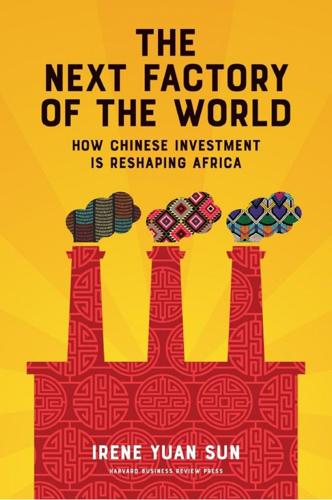
The Next Factory of the World: How Chinese Investment Is Reshaping Africa
by
Irene Yuan Sun
Published 16 Oct 2017
Stiglitz, and Justin Yifu Lin, eds., The Industrial Policy Revolution II: Africa in the Twenty-first Century (Basingstoke, UK: Palgrave Macmillan, 2013). 10. Enrico Moretti, The New Geography of Jobs (Boston: Mariner, 2013), 21. 11. “Leveraging Africa’s Demographic Dividend,” African Business Magazine, January 14, 2015, http://africanbusinessmagazine.com/uncategorised/leveraging-africas-demographic-dividend/. 12. United Nations Population Division, “World Population Prospects: The 2015 Revision.” 13. Ibid. 14. International Labour Organization, “Where Is the Unemployment Rate the Highest in 2014?” http://www.ilo.org/global/about-the-ilo/multimedia/maps-and-charts/WCMS_233936/lang--en/index.htm. 15.

Smart Cities, Digital Nations
by
Caspar Herzberg
Published 13 Apr 2017
Even greenfield environments inevitably will require extra work to integrate the IT features of developments separated by time of construction and the standards of their architects. 4 Moinak Mitra, “Cisco’s Campus in Bangalore: Lessons for PM Modi’s Smart Cities,” The Economic Times, November 12, 2014, http://economictimes.indiatimes.com/magazines/corporate-dossier/lessons-for-pm-narendra-modis-smart-cities-from-ciscos-smart-campus-in-bangalore/articleshow/45058047.cms. 5 By 2020, the average Indian national will be twenty-nine, versus thirty-seven years in China and forty-five in Japan: “India’s Demographic Dividend: Asset or Liability?” Wharton University of Pennsylvania, January 9, 2013, http://knowledge.wharton.upenn.edu/article/indias-demographic-dividend-asset-or-liability/. 6 Rukmini S, “65 million people live in slums in India, says census data”, The Hindu, October 1, 2013 http://www.thehindu.com/todays-paper/tp-national/tp-newdelhi/65-million-peoplelive-in-slums-in-india-says-census-data/article5188234.ece.
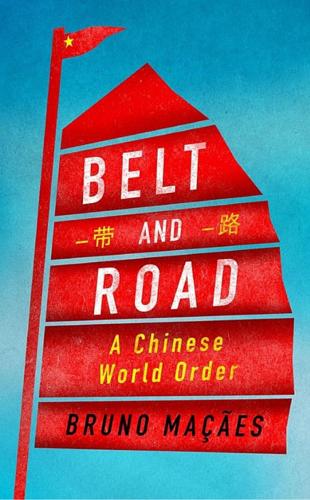
Belt and Road: A Chinese World Order
by
Bruno Maçães
Published 1 Feb 2019
The plan envisages a deep and broad penetration of almost all sectors of Pakistan’s economy by Chinese companies and its wholesale reorganization to fit with Chinese-led value chains. “With a decrease in the workforce and increase in labor costs in China, its manufacturing industry has to handle key problems in transformation and upgrading. However, the demographic dividends of Pakistan provide an important basis for development of the manufacturing and service sectors. Chinese manufacturing enterprises relocate their factories to Pakistan for lower labor costs and greater internationalization. This also promotes the upgrade and reconstruction of the manufacturing industry of Pakistan and creates many employment opportunities for the local people.”23 A key element is the development of new industrial parks, surrounded by the necessary infrastructure and a supporting policy environment.
…
As China’s economic growth is tabling out, and slowing down as the numbers of young people in its work force dwindle, India will jostle for the place of global economic success story with its rewards in international prestige and investment flows. Its advantages correlate directly with China’s weaknesses: the demographic dividend of a young population—even if that young population also poses serious challenges—and a public culture much more comfortable with experimentation and the exposure to different cultural influences. Its information technology strength continues to rival that of China. If we limit ourselves to measures of economic or military power, China’s edge is obvious, but things look very different when we turn to that most elusive of power metrics: soft power, the ability to project your way of life abroad and attract global audiences.
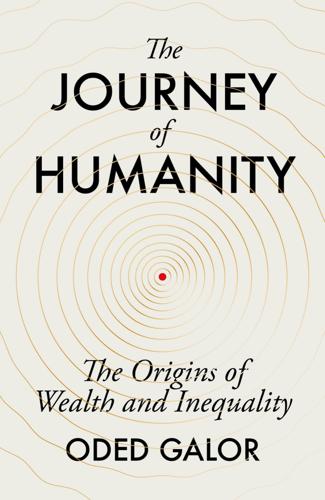
The Journey of Humanity: The Origins of Wealth and Inequality
by
Oded Galor
Published 22 Mar 2022
In other words, a region with 50 million people and an income of $10,000 per capita emits significantly more carbon than a region with 10 million people and an income of $50,000 per capita, despite the fact that the two regions have precisely the same aggregate income. This implies that economic growth fuelled by a decline in fertility rates – growth arising due to an increase in the relative size of the working-age population (known in the economic discipline as a ‘demographic dividend’) – would permit significant reductions in the projected level of carbon emissions. In fact, the decline in fertility rates since the onset of the Demographic Transition has been reducing the burden of exponential population growth on the environment. So while the Industrial Revolution triggered our current period of global warming, the concurrent onset of the Demographic Transition may well serve to mitigate its effects, diminishing the potential trade-off between economic growth and environmental preservation.
…
A B C D E F G H I J K L M N O P Q R S T U V W X Y Z A Abbasid Caliphate (750–1258), 176, 184 abortion, 87–8 Aeneid (Virgil), 59 aeroplanes, 111 Africa agriculture in, 21, 179–80, 188–9 colonialism in, 157, 158, 187 diversity in, 220–32 emigration from, 127 fertility rates in, 112 Homo sapiens emergence in, 5, 18–20, 30, 119, 120, 124, 218–32, 221, 222, 237 income per capita in, 106 industrialisation in, 241 institutions in, 157, 187 livestock in, 179–80 living standards in, 7 malaria in, 180 marriage in, 87 Neolithic Revolution in, 202, 203, 204, 207 poverty in, 113 slave trade in, 173–4, 187 trade in, 136 trust in, 173–4 tsetse flies, 180 African Americans, 130–31, 155, 156, 215–17 Afrobarometer 173–4 Age of Enlightenment (c.1637–1800), 27, 58, 66, 170–71, 182, 212 agriculture climate and, 13, 15, 20, 21, 25, 155, 181, 186–7, 193–5, 203–4 comparative advantage in, 181, 211–12, 237 cooperation and, 168–9 diseases and, 8, 180 education and, 77, 81–3, 109, 140 future orientation and, 187–90, 213 gender roles and, 191–2 Green Revolution, 111, 117 hydraulic hypothesis, 184 innovations in, 61, 64, 181 institutions and, 208–10 irrigation, 22, 23, 120, 141–2, 160, 168, 184, 190 labour productivity, 131–2 livestock, 179–80, 203 Neolithic Revolution, see Neolithic Revolution soil and, 8, 21, 30, 141, 155, 186, 187, 191, 198, 204, 209, 236 Akkadian Empire (c.2334–2154 BCE), 23 algebra, 69 altitude, 51 American Civil War (1861–5), 62 Amsterdam, Netherlands, 40 Anatolia, 23, 40, 206 Angola, 154 antibiotics, 111 Aquinas, Thomas, 163 Arabian Nights, 59 Arctic region, 195 Argentina, 77, 154 Arkwright, Richard, 59, 72 Arrow, Kenneth, 172 art, 20, 22, 58, 62, 120, 216 Asia agriculture in, 188, 192 East–West orientation, 203 fertility rates in, 112 income per capita in, 106 industrialisation in, 241 living standards in, 7 marriage in, 87 Neolithic Revolution in, 202, 203 trade in, 136 see also Middle East Assyrian Empire (2500–609 BCE), 40 Athens, 40 Atlantic triangular trade, 136 Australia, 49, 106, 153, 154, 157 Austronesians, 206–7 automobiles, 61, 97, 101, 107, 111 Aztec civilisation, 154, 205 B Bab-el-Mandeb Strait, 19 Babylonian Empire (1895–539 BCE), 40 Bandy, Robert, 217 Banfield, Edward, 172 Bantu people, 207 Battle of the Books, The (Swift), 169 Belgium, 37, 64, 65, 72, 75, 138 Bell, Alexander Graham, 104 Berry, Charles ‘Chuck’, 216 Bessemer, Henry, 60 bicycles, 61 bifurcation theory, 46 Bill of Rights (1689), 148 biodiversity, 9, 29, 33, 202, 210, 236 Black Death (1346–53), 34–5, 36, 149–50, 159, 212 Blake, William, 57 Boas, Franz, 168 Bolivia, 131, 154, 229 Boserup, Ester, 191 brain, 14–17 Brazil, 103, 154, 216 Brexit (2016–20), 110 Brown, Moses, 72 Brown University, 1, 72, 239 Buddhism, 63 Byzantine Empire (395–1453), 48 C Caesar, Julius, 184 caloric yields, 189 Calvinism, 164 Cameroon, 207 Canada, 77, 108, 138, 154 canals, 61 Card, Addie, 78 cargo cults, 233–4 Caribbean, 113, 154, 155, 157, 186 Carthage, 23 Cartwright, Edmund, 59 Çatalhöyük, 23, 40 Catholicism, 148, 163, 217 Central America, see under Meso-America central heating, 101 centralised civilisations, 182–7 cephalopods, 14 de Cervantes, Miguel, 59 Chaplin, Charles, 105 Charlemagne, Emperor of the Romans, 184 Charles II, King of England and Scotland, 148 chemistry, 61, 69 Chicago, Illinois, 60 childbirth, 2, 41, 83 children education of, 8, 52–5, 62–83, 88–91, 94–8, 122, 129, 175 labour of, 57, 67, 78–83, 89, 93, 99, 122 mortality of, 2, 29, 41, 57, 89, 98, 121, 127, 128, 180 quantity–quality trade-off, 52–5, 88–91 Chile, 77, 146, 154 China agricultural productivity, 131 Black Death in (c. 1331–54), 34 centralised authority in, 182, 183, 184–6 coal mining in, 181 collectivism in, 190 dictatorship in, 146 diversity and, 226–9 education in, 64, 91 fertility rates in, 91 geography of, 182 growth in, 115 gunpowder, development of, 47, 61 income per capita in, 210 industrial regions, 108 naval exploration, 213 Neolithic Revolution in, 3, 21, 23, 122, 206, 210 New World crops in, 37–9 one-child policy (1979–2015), 112 Opium War, First (1839–42), 61 poverty in, 113, 114 printing, development of, 48 technological development in, 121, 176, 184 writing development of, 24 cholera, 205 Christianity, 63 Catholicism, 148, 163, 217 Protestantism, 63, 90, 163–4, 175, 184, 217 wealth, views on, 163 civil law systems, 154 civil liberties, 127 civilisations, dawn of, 22–5, 208–10, 236 class conflict, 73, 74, 78 climate, 13, 15, 20, 21, 25, 155, 181, 186–7, 193–5, 203–4 climate change, 116–18, 123, 241 coal mining, 59, 60, 71, 181 Cobbett, William, 86 Collapse (Diamond), 33 Colombia, 154 colonialism, 135–7, 140, 147, 152–9, 168, 175, 205, 235 Columbia, 103 Columbian Exchange, 35–9, 94–6, 195 Columbus, Christopher, 35, 47, 182–3 Comenius, John Amos, 65 common law systems, 154 Communist Manifesto, The (Marx and Engels), 62, 73 comparative advantage, 71, 137, 140, 141, 211–12 competition, 182–6, 198 concrete, 61 de Condorcet, Nicolas, 27 Confucianism, 63 consumption vs investment strategy, 188–90, 213 contraception, 85–6, 118 convergent evolution, 14–15 cooking, 15, 17 cooperation, 8, 168–9, 175, 236 Copernicus, Nicolaus, 44 Corinth, 40 Cortés, Hernán, 205 Covid-19 pandemic, 115, 130, 240 Crime and Punishment (Dostoevsky), 59 critical junctures, 212 Crompton, Samuel, 59 Cuba, 216 Cuitláhuac, Emperor of Tenochtitlan, 205 cultural traits, 51–5, 141, 161, 163–77, 187–98, 213 collectivism, 190–91 cooperation, 8, 168–9, 175, 236 entrepreneurship, 52, 72, 165, 182, 184, 193, 197 future orientation, 52, 141, 165, 169–71, 175, 187–90, 197–8, 213, 238 gender equality, see gender equality geography and, 181, 187–90, 208–10, 236 growth and, 169–71 human capital investment, 52–5, 80, 88–91, 94–8, 122, 165, 175 immigration and, 174 individualism, 165, 176, 190–91, 197 institutions and, 182 language and, 195–8 loss aversion, 192–5 prosperity and, 174–7 Protestant ethic, 164–5, 175, 184 racism and, 168 social hierarchies, 197 survival advantage of, 168 technology and, 52–5, 121, 169–70, 176, 231 transmission of, 171 trust, 8, 165, 172–4, 175, 236 Cyprus, 40 D Dante, 59 Darby, Abraham, 60 Darwin, Charles, 27, 50 decline of generations, 169 deindustrialisation, 107–10, 139, 140 democracy, 78, 151–2, 155, 160, 172–3 social capital and, 172–3 demographic dividend, 117 demographic transition, 6, 85–100, 106, 112–18, 175, 176, 198, 240 human capital and, 88–91, 112, 175, 211 Denmark, 104 Detroit, Michigan, 107–8, 217 Diamond, Jared, 21, 29, 32–3, 202, 203 Dickens, Charles, 57 dictatorships, 146 see also extractive institutions diet, 2, 25, 28, 30, 33, 95, 101, 107 diphtheria, 102 diseases, 2, 8, 40, 94, 102, 204–5, 236 agriculture and, 8, 180 Black Death (1346–53), 34–5, 36, 149–50, 159, 212 colonialism and, 156–7 germ theory, 102 immunity to, 51, 205 malaria, 156, 180, 205 sleeping sickness, 180 Spanish flu pandemic (1918–20), 106, 240 vaccinations, 102 diversity, 6, 9, 19, 142, 160, 215–32, 227–8, 237 innovation and, 9, 215–16, 226–30 measurement of, 223–4 origins of, 219–22 prosperity and, 217–18, 222, 224–32 Divine Comedy (Dante), 59 division of labour, 22, 191–2, 196–7, 204 Domino, Fats, 216 Don Quixote (Cervantes), 59 Dostoevsky, Fyodor, 59 double-entry bookkeeping, 65 E East Germany (1949–90), 144 Easter Island, 32, 207 economic ice age, 39–41 Edison, Thomas, 60, 104 Education Act (UK, 1902), 76 education, 8, 52–5, 62–83, 88–98, 99, 118, 129, 238 agriculture and, 77, 81–3, 109, 140 child labour and, 57, 67, 78–83, 122 fertility rates and, 89–98, 99, 113, 122 human capital, see human capital industrialisation and, 64, 67–83, 89, 99, 109, 140 inequality and, 127, 140 investment in, 52–5, 80, 88–91, 94–8, 122, 165 land ownership and, 77, 155 technology and, 62–83, 99, 109, 110, 111–12 trade and, 137 universal public, 73–9 women and, 91, 92, 112 Egypt, 3, 20, 23, 24, 40, 63, 87, 88, 121, 207 Einstein, Albert, 44 electricity, 61, 101, 129, 130, 144 elevators, 61 Elizabeth I, Queen of England, 147 Engels, Friedrich, 27, 62, 73 England, 3, 35, 37, 91, 147 Enlightenment (c.1637–1800), 27, 58, 66, 170–71, 182, 212 entrepreneurship, 52, 72, 165, 182, 184, 197 environmental degradation, 116–18, 241 Epic of Gilgamesh, 59 Ethiopia, 131, 229 Euphrates River, 20, 23, 206, 236 Europe income per capita, 106 industrialisation, see industrialisation institutions see institutions living standards in, 7, 41 Neolithic agriculture in, 35–7, 94–6, 188, 190, 192 Black Death (1346–53), 34–5, 36, 149–50, 159, 212 colonialism, 135–7, 140, 147, 152–9, 168, 175 competition in, 182–3, 184 East–West orientation, 203 economic growth in, 115 education in, 64–7 Enlightenment (c.1637–1800), 27, 58, 66, 170–71, 182, 212 fertility rates in, 85–6, 122 future orientation in, 190, 213 gender equality in, 92 geography of, 184–5 immigration to, 127, 192 Revolution in, 202, 203 New World crops in, 35–7, 94–6, 190 Protestant ethic in, 164–5, 175, 184 technological development in, 58, 61–2, 97, 212 trade in, 135–7 European Marriage Pattern, 86 European Miracle, 182, 213 European Social Survey, 189, 194 European Union (EU), 110 extinctions, 32, 88, 116, 167, 193, 203 extractive vs inclusive institutions, 145–61, 172, 186–7, 198, 209, 236 eye, evolution of, 14, 51 eyeglasses, 64 F Factory Acts (UK), 80 famines, 29, 40, 102, 193 Irish Famine (1845–9), 37, 96 Faust (Goethe), 59 feedback loops, 17, 48 feminism, 97 Ferdinand II, King of Aragon, 183 Fertile Crescent, 20, 21, 23, 33, 40, 48, 122, 202–4, 206, 210, 214, 226 fertility rates, 6, 85–98, 87, 112, 113, 117–18, 122, 123, 232 trade and, 137–8 feudalism, 62, 73, 147, 149–50, 159, 172 film, 105 financial crisis (2008), 115 Finland, 40 Florence, Italy, 34 food surpluses, 4, 28–41, 85, 94, 95 Ford, Henry, 107 France Black Death in, 34 colonialism, 153, 154 education in, 64, 67, 68, 70–71, 72, 75, 147 fertility rates in, 90 geography of, 185 guilds in, 150 industrialisation in, 109, 110, 138 late blight in, 37 life expectancy in, 40 living standards in, 147 Napoleonic Wars (1803–15), 62, 146, 153 Protestantism in, 164 trade in, 137 Fresnes-sur-Escaut, France, 70 future orientation, 52, 141, 165, 168–71, 175, 187–90, 197–8, 213, 236, 238 G Ganges River, 236 Gates, William ‘Bill’, 118 gender equality, 8, 91–4, 99, 106, 118, 122, 236 geography and, 191–2 language and, 196–7 wage gap, 91–4, 99, 122 general relativity, theory of, 44 General Social Survey, 194 Genoa, Republic of (c. 1000–1797), 183 geography, 179–99, 236 competition and, 182–6 future orientation and, 187–90, 197–8, 213 gender equality and, 191–2 individualism in, 190–91 institutions and, 181, 182, 186–7, 207, 208–10 language and, 195–8 loss aversion and, 192–5 Neolithic Revolution and, 203–4, 208–10, 212–14 geometry, 69 germ theory, 102 Germany, 64, 67, 75, 93, 110, 112, 137, 138, 164, 197 glass, 61 global warming, 116–18, 123 globalisation, 115, 137, 235 Godwin, William, 27 Goethe, Johann Wolfgang von, 59 Goldin, Claudia, 111 grass analogy, 140–42 Great Depression (1929–39), 106, 115, 240 Great Fire of London (1666), 150 Great Migration (1916–70), 215 Great Pyramid, Giza, 24 Greece, 3, 18, 23, 40, 48, 58, 63, 88, 121, 160, 170, 213 Green Revolution, 111, 117 Greenland, 33, 49 guilds, 150 gunpowder, 47, 61 Guns, Germs and Steel (Diamond), 21 Gutenberg, Johannes, 48–9, 64, 104 H Habsburg Empire (1282–1918), 173 Hamburg, Germany, 34 Hamlet (Shakespeare), 59 hands, evolution of, 17 Hargreaves, James, 59 Hawaii, 48 head starts, 29, 34, 48, 146, 181, 185, 201–2, 204, 206, 210–12, 236–7 agricultural comparative advantage and, 181, 211–12, 237 Hegel, Georg Wilhelm Friedrich, 9 Henry IV, King of France, 147 Henry VII King of England, 183 hierarchical societies, 98, 172, 197, 207, 208–10 high-yield crops, 111, 190, 213 Hill, Rowland, 104 Hine, Lewis, 78 Hobbes, Thomas, 2 Hofstede, Geert, 188 Holy Roman Empire (800–1806), 165, 172, 173 Homo erectus, 18 Homo technologicus, 119 Hong Kong, 154 hookworm, 90 hot-air balloons, 61 Huayna Capac, Incan Emperor, 205 Hugo, Victor, 59, 62 human capital, 6, 52–5, 66–73, 88–91, 93, 103, 111–12, 232 child labour and, 80, 81, 83, 122 colonialism and, 158 demographic transition and, 88–91, 112, 175, 232 dictatorships and, 146 industrialisation and, 66–73, 74, 76, 80, 81, 83, 109, 110, 140, 211 investment in, 52–5, 80, 88–91, 94–8, 122, 165, 175 resource curse and, 181 technology and, 62–83, 99, 109, 110, 111–12 human rights, 127 humanism, 170 Hume, David, 182 hunter-gatherer societies, 6, 17, 18, 20, 21–2, 30, 33–4, 203, 206, 207 hydraulic hypothesis, 184 I Ice Age, 18, 19 immigration, see migration Inca civilisation, 154, 205 inclusive vs extractive institutions, 145–61, 172, 186–7, 198, 209, 236 income effect, 89, 93 income per capita, 4, 8, 31, 102, 106, 109, 117, 122, 130, 131–5 diversity and, 229 future orientation and, 198 inequality, 131–5, 132, 134, 210 institutions and, 155, 160 trade and, 137 India, 23, 111, 112, 113, 131, 138, 154, 210 individualism, 165, 176, 190–91, 197 Indonesia, 154, 207 Industrial Revolution (1760–1840), see industrialisation industrialisation, 6, 45–7, 55, 57–62, 85, 86, 109, 121, 124, 139, 181, 198–9, 240 agriculture and, 181, 202 decline of, 107–10, 139, 140 education and, 64, 66–83, 89, 99, 109, 110, 140, 211 environment and, 116, 123, 241 institutions and, 147–51 skilled labour and, 67, 71, 137 trade and, 136, 138 inequality, 7, 9–10, 44, 74, 106 climate and, 155, 203–4 colonialism and, 135, 137, 140, 152–9, 235 cultural traits and, 163–77 diversity and, 215–32 education and, 127, 140 geography and, 179–99, 203–4 institutions and, 147–61, 172 legal systems and, 154–5 Neolithic Revolution and, 201–14, 236–7 trade and, 135–40 infant mortality, 2, 29, 41, 57, 89, 98, 121, 127, 128, 180 influenza, 205 innovation, 6, 58, 59, 111 age of growth, 111 climate change and, 118, 123 competition and, 184, 186, 198 cooking and, 17 diversity and, 9, 215–16, 226–30 education and, 53, 91, 99 food surpluses and, 4 industrialisation and, 58, 61–2, 65, 83 institutions and, 144, 161 literacy and, 72 Malthusian epoch, 4, 47, 48 Neolithic Revolution, 23, 120, 204 population size and, 47, 48, 120, 204 institutions, 147–61, 172, 175, 182–7, 198, 204, 213 climate and, 155–6 colonialism and, 152—9, 175 competition and, 182–6 democracy, 151–2, 172 geography and, 181, 182, 186–7, 198, 207, 208–10 technology and, 147–51, 176, 231 International Monetary Fund (IMF), 234 International Organization for Standardization, 111 Internet, 101, 111, 130 Inuit, 49, 195—6 invertebrates, 14 investment vs consumption strategy, 188–90, 213 Ireland, 36–7, 91, 94–6, 175 iron ore, 60 irrigation, 22, 23, 120, 141–2, 160, 168, 184, 190 Isabella I, Queen of Castile, 183 Islam, 63 Israel, 2, 13, 18, 201 Italy, 112, 127, 137, 147, 160, 171–3, 185 J Jacquard, Joseph-Marie, 150 James II and VII, King of England and Scotland, 148, 159 Japan, 62, 77, 112, 146, 210, 213, 226, 233 Jericho, 3, 22–3, 24 Jerusalem, 1–2 Jewish people; Judaism, 63, 88–9, 166–7, 169 João II, King of Portugal, 182–3 Joshua ben Gamla, 166 Judaean Revolt (66–70 CE), 166 Judah ha-Nasi, 166 K Kahneman, Daniel, 192 Kant, Immanuel, 170 Karataş, 40 Kay, John, 59 Kenya, 131 kettle analogy, 43, 46, 100 Keynes, John Maynard, 115 Khirokitia, 40 Khoisan, 207 Kitson, James, 75 Korea, 77, 91, 143, 144, 146, 151, 159, 171, 177, 185, 212, 226, 231 L labour productivity, 131 lactase persistence, 24–5 land ownership of, 77, 155 strategies of use, 188–90 see also agriculture landlocked countries, 181 language, 195–8, 221–2 Latin America, see Central America; South America law of diminishing marginal productivity, 133 Lee, William, 147 legal systems, 154–5 Leo X, Pope, 163 Lerna, 40 life expectancy, 2, 41, 57, 89, 99, 102–3, 103, 114, 121, 127, 128, 130 light bulbs, 60 linguistic niche hypothesis, 196 literacy, 2, 63–8, 66, 70–71, 72, 88, 92, 95, 107, 112 Judaism and, 166, 167 Ottoman Empire and, 184 Protestant Reformation and, 90, 164, 165, 167 literature, 58, 59, 62, 216 livestock, 179–80 living standards, 1–10, 28, 94, 99, 101–7, 114, 121–4, 127–31, 240 diversity and, 217–18, 222, 224–32 hunter-gatherer societies, 30, 33 Malthusian thesis and, 3–5, 6, 28–41, 240 London, England, 34, 150 long-term orientation, see future orientation loss aversion, 192–5 lost paradise myth, 34 Lumière brothers, 105 Luther, Martin, 90, 163 Luxembourg, 160 M Madagascar, 207 Madrid, Spain, 40 Mahabharata, 59 maize, 21, 35, 37–9, 190, 203 malaria, 156, 180, 205 Malthus, Thomas, 3–5, 27–30, 50 Malthusian epoch, 3–5, 6, 27–41, 45–7, 83, 85, 99–100, 102, 112, 151, 156, 232 cultural traits and, 52, 54, 89, 94, 95, 97, 98, 188, 193 economic ice age, 39–41 geography and, 181, 188, 193 population composition, 50, 54 population swings, 6, 33–9 poverty trap, 5, 25, 45, 121, 235, 240 Mamluk Sultanate (1250–1517), 48 manufacturing, 107–10 Marconi, Guglielmo, 104 marriage, 86–7, 87 Marx, Karl, 9, 27, 62, 73, 74, 78 Mary II, King of England and Scotland, 148 Massachusetts, United States, 81 Mayan civilisation, 3, 33, 46, 121, 154 McCloskey, Deirdre, 57–8 McLean, Malcolm, 111 measles, 205 mechanical drawing, 69 Mediterranean Sea, 13, 19, 20, 127, 213 Meiji Restoration (1868), 62, 146, 213 Memphis, Egypt, 23 Meso-America colonialism in, 154, 155, 156, 157, 158, 186–7, 205–6 diversity in, 220–21 emigration from, 127 fertility rates in, 112 income per capita in, 106 industrialisation in, 241 institutions in, 156, 157, 158, 160, 186–7, 236 land ownership in, 77, 155 living conditions in, 7 Malthusian crises in, 33 Neolithic Revolution in, 21, 202, 203, 204, 205–6 population density in, 154, 156 poverty in, 113 trade in, 136 writing, development of, 24 Mesolithic period, 40 Mesopotamia, 23, 24, 40, 59 see also Fertile Crescent Methodism, 164 Mexico, 103, 108, 111, 154, 205 microscopes, 64 middle class, 62, 152 Middle East agriculture in, 20, 21, 23, 192, 202–4, 206, 210, 214 emigration from, 127 hunter-gatherer societies in, 33 life expectancy in, 40 marriage in, 87 Neolithic Revolution in, 20, 21, 23, 40, 48, 122, 192, 202–4, 206, 210, 214 migration, 127, 174, 217, 218 Mill, John Stuart, 27 mining, 59, 60, 61, 70, 71 Misérables, Les (Hugo), 59 mita system, 152–3 Mitochondrial Eve, 18 Modernisation Hypothesis, 152 Mokyr, Joel, 170 Mongol Empire (1206–1368), 34 Morse, Samuel, 60 mosquitoes, 180 moths, 51 Mount Carmel, Israel, 13, 18 multicultural societies, 218 Murasaki Shikibu, 59 music, 58, 215–16 N nanotechnology, 119 Naples, Italy, 40 Napoleon, Emperor of the French, 184 Napoleonic Wars (1803–15), 62, 146, 153 Native Americans, 33, 155 Natufian culture (13,000–9500 BCE), 20 Nea Nikomedeia, 40 Neanderthals, 13 Neolithic Revolution, 6, 9, 20–25, 29–41, 46, 48, 51, 120, 122, 199, 201–14, 210, 236–7 diseases and, 204–5 geography and, 199, 203–4 head start and, 29, 34, 48, 202, 204, 206, 210–12, 236–7 technology and, 29–30, 48, 120, 201–2, 204, 206, 207, 209–12 Netherlands, 37, 40, 64, 65, 75, 147, 148, 164, 213 New Guinea, 21, 207 New World crops, 35–9, 94–6, 195 New York City, 23, 60, 61, 217 New Zealand, 106, 153, 154, 157, 207 Newcomen, Thomas, 59 Nigeria, 207 Nile River, 18, 20, 23, 206, 207, 236 North America, 7, 41, 58, 62, 98 colonialism in, 37, 153, 154, 155, 157, 158 economic growth in, 115 fertility rates in, 85 industrialisation, 60, 72, 107, 241 institutions in, 153, 154, 155, 157, 158, 160, 175 land ownership in, 77, 155 Malthusian crises in, 33 Neolithic Revolution in, 202, 203, 204 technological development in, 58, 61–2 North Korea, 143, 144, 146, 151, 159, 171, 177, 212, 231 North, Douglass, 145 Norway, 104 nuclear energy, 44, 111 numeracy, 63, 67, 88 nurturing strategy, 53 O obesity, 171, 198 Oceania, 7, 32, 87, 105, 202, 203, 207 Ohalo II site, Israel, 201 oil crisis (1973), 115 Opium War, First (1839–42), 61 opportunity cost, 89, 93 Ottoman Empire (1299–1922), 1–2, 64, 173, 182, 183–4 Out of Africa hypothesis, 5, 18–20, 30, 119, 120, 124, 218–32, 221, 222, 237 outsourcing, 115 Owen, Robert, 75 P Pakistan, 111 Palmer, Robert, 215 paper, 61 Paraguay, 103 Paris, France, 34, 40, 150 Pasteur, Louis, 102 Paul the Apostle, 163 Pawtucket, Rhode Island, 72 pendulum clocks, 64 per capita income, see income per capita Perry, Matthew, 62 Persia, 48, 63, 121, 213 Peru, 152–3, 205 Pharisees, 166 phase transition, 43–6, 50, 83, 98, 99–100, 122, 151 Philippines, 207 phonographs, 104 Pickford, Mary, 105 Pitcairn Islands, 33 Pizarro, Francisco, 205 Plato, 9 Pleistocene period, 19 ploughing, 191–2 pneumonia, 205 politeness distinctions, 197 political extremism, 106 political fragmentation, 182–7, 207 pollution, 116–18 Polynesia, 32, 48 population, 46–55, 47 composition of, 50–55 demographic transition, 6, 85–100, 106, 112–18, 175 diseases and, 204–5 diversity of, 9, 142, 160, 177, 214, 215–32, 237 institutions and, 208 labour and, 34–5 Malthusian thesis, 3–5, 6, 28–41, 46, 50, 156 technology and, 5, 29–30, 31, 47–55, 89, 120–24, 156, 179, 181, 202, 211 unified growth theory, 46–55 Portugal, 38, 153, 154, 182–3 positive feedback loops, 17, 48 postal services, 104 potatoes, 36–7, 94–6 poverty, 113–14, 114 poverty trap, 5, 25, 45, 121, 235, 240 Presley, Elvis, 216 printing, 48–9, 64–5, 104, 183–4, 213 production lines, 61 property rights, 92, 144–6, 148, 154, 155, 167, 197, 198, 204, 234 Protestantism, 217 cultural traits, 164–5, 175, 184 Reformation (1517–1648), 63, 90, 163–4, 184 proximate vs ultimate factors, 9, 140–42, 198 Prussia (1525–1918), 68–9, 72, 90, 146, 153, 165 Puritans, 175 Putnam, Robert, 172 Pygmies, 207 Q Qing Empire (1636–1912), 61 Quakers, 175 quantity–quality trade-off, 52–5, 88–91 quantum mechanics, 44 quasi-natural historical experiments, 38–9, 70, 90 Quebec, 54 R racism, 106, 168, 198, 215, 216, 217 radio, 101, 104–5, 111 Rational Optimist, The (Ridley), 216 Red Sea, 19 Reformation (1517–1648), 63, 90, 163 refrigerators, 101 Renaissance (c. 1400–1600), 64, 170 resource curse, 181 Ricardo, David, 27, 144 rice, 190 Ridley, Matt, 216 Roberts, Richard, 80 rock ’n’ roll music, 215–16 Rockefeller Sanitary Commission, 90 Rome, ancient, 1–2, 40, 46, 63, 88, 121, 166, 170, 212 Rome, city of, 23 Roosevelt, Franklin, 217 Royal African Company, 148 rule of law, 144, 186, 204 running water, 101 Russian Empire (1721–1917), 73, 77 Russian Revolution (1917), 73 Rust Belt, 108, 110 S Sadducees, 166 Sahara Desert, 21, 179, 204, 214, 236 Sámi, 195–6 Scandinavia, 185, 211 science, 20, 22, 58, 69, 75, 120, 216 Scotland, 175 Scramble for Africa (1884–1914), 158 Sea of Galilee, 201 serial founder effect, 219–22 Seven Years War (1756–63), 154 sewerage, 101 Shakespeare, William, 59 Shimon ben Shetach, 166 Siberia, 236 silk, 81 Silk Road, 34 Sinai Peninsula, 18 Singapore, 146, 154 skin pigmentation, 51 skyscrapers, 60, 61 Slater, Samuel, 72 slavery, 8, 106, 136, 148–9, 154, 155, 168, 198, 236 sleeping sickness, 180 smallpox, 96, 102, 205 Smith, Adam, 144 smoking, 198 social capital, 172–3, 175 social cohesion, 9, 160, 167, 175, 186, 197, 218, 226, 229–31, 234, 237 social hierarchies, 98, 172, 197, 207, 208–10 soil, 8, 21, 30, 141, 155, 186, 187, 191, 198, 204, 209, 236 Solow, Robert, 132–3 Song Empire (960–1279), 176, 184 South America agricultural productivity in, 131 colonialism in, 154, 156, 157, 158, 186–7, 205 diversity in, 220–21 emigration from, 127 fertility rates in, 112 geography of, 186–7 income per capita in, 106 industrialisation in, 241 institutions in, 154, 156, 157, 158, 160, 186–7 land ownership in, 77, 155 living standards in, 7 Neolithic Revolution in, 202, 203, 204, 205–6 population density in, 154, 156 poverty in, 113 trade in, 136 South East Asia, 19, 20, 21, 131, 180, 184, 202 South Korea, 77, 91, 144, 146, 151, 159, 171, 177, 210, 212, 231 Soviet Union (1922–91), 59 Spaichi, Hans, 150 Spain, 40, 148–9, 152–3, 154, 183, 185, 205 Spanish flu pandemic (1918–20), 106, 240 Sputnik 1 launch (1957), 59 squirrels, 1, 239 Sri Lanka, 103 state formation, 208–10 steam engines, 59, 60, 70–71, 97 steam locomotives, 60, 97 steel, 60, 61 Stockholm, Sweden, 97–8 subsistence, 1, 4–5, 20, 32, 33, 36–7, 39, 94–6 substitution effect, 89, 93 Sumer (c. 4500–1900 BCE), 23, 24, 59 Sweden, 40, 93, 97–8, 104, 137, 138, 160 Swift, Jonathan, 169 Switzerland, 72, 104, 138, 160, 164, 185 T Taiwan, 77, 146, 206 Tale of Genji, The (Shikibu), 59 Tanna, Vanuatu, 233–4, 237–8 Tasmania, 49 taxation, 175, 208, 209, 211, 234 technology, 3, 20, 22, 24, 25, 111–12, 120–24, 147, 240 accelerations, 58–62 agricultural comparative advantage and, 181, 211–12, 237 competition and, 182–6 cultural traits and, 52–5, 121, 169–70, 176, 231 diversity and, 215–16, 226–30 education and, 62–83, 99, 109, 110, 111–12 hands, evolution of, 17 head starts, 29, 34, 48, 146, 181, 185, 201–2, 204, 206, 210–12, 236–7 institutions and, 147–51, 176, 231 living standards and, 104 Neolithic Revolution and, 29–30, 48, 120, 201–2, 204, 206, 207, 209–12 population and, 5, 29–30, 31, 47–55, 89, 120–24, 156, 179, 181, 202, 211 regressions in, 49 Tel Aswad, Syria, 201 Tel Jericho, West Bank, 201 telegraph, 60, 104 telephones, 104 telescopes, 64 television, 101, 111 textiles, 72, 79, 80, 93, 138, 147 Theory of Everything, 44 theory of general relativity, 44 thrifty gene hypothesis, 171 Tigris River, 20, 23, 206, 236 Titanic, 105 toilets, 101 Tonga, 48 trade, 135–40, 144, 185, 235 fertility rates and, 137–8 geography and, 181, 185 Transcaucasia, 21 Trump, Donald, 109–10 trust, 8, 165, 172–4, 175, 236 tsetse flies, 180 Turkey, 23, 40, 210 Tversky, Amos, 192 typhus, 37 U Uganda, 131 ultimate vs proximate factors, 9, 140–42, 198 unified growth theory, 44–55 United Kingdom Brexit (2016–20), 110 child labour in, 80–81 colonialism, 61, 138, 147, 153–5 education in, 67–8, 71–2, 75–6, 78, 91, 96–7 fertility rates in, 91, 83, 97 gender wage gap in, 93 geography of, 185 income per capita in, 210 industrial decline in, 108, 110 industrialisation in, 59, 67–8, 71–2, 75, 96–7, 138, 147, 148, 181 institutions in, 147–51, 154–5, 159 literacy in, 65 Neolithic Revolution in, 210 Opium War, First (1839–42), 61 postal service in, 104 Protestantism in, 164 trade in, 136–7 United Nations, 13 United States African Americans, 130–31, 155, 156, 215–17 agricultural productivity, 131 Apollo program (1961–72), 59 child labour in, 78, 81–3 Civil War (1861–5), 62 education in, 75, 77, 90 fertility rates in, 85, 92, 93 future orientation, 190 gender wage gap in, 93 Great Migration (1916–70), 215 hookworm in, 90 immigration to, 127, 192, 217 income per capita in, 106 industrial decline in, 107–8, 109–10 industrialisation in, 60–61, 67, 69, 71, 72, 138 infant mortality in, 130–31 institutions in, 155, 157, 175 land ownership in, 77 life expectancy in, 130 living standards in, 101, 103, 105, 106, 130 Pacific War (1941–5), 233 Ur, 23 urbanisation, 149, 153, 167, 211–12, 237 Uruguay, 77 Uruk, 23 V vaccinations, 102 Vanuatu, 48, 233–4, 237–8 Venice, Republic of (697–1797), 183 vertebrates, 14 Vietnam, 146 Vikings, 47 Virgil, 59 vitamin D, 51 Voltaire, 154 W wages, 39, 40 Black Death and, 34–5, 36, 149 fertility rates and, 89, 93 women, 91–4, 99, 122 Wallace, Alfred Russel, 27 War of the Worlds, The (Wells), 105 war, 39, 102, 123, 149, 154 washing machines, 101 Washington Consensus, 234 Watt, James, 59 Weber, Max, 164 welfare state, 74 Wells, Herbert George, 105 Wesley, John, 164 wheat, 21, 23, 28, 34, 36, 40, 94, 111, 133, 136, 190, 201, 202, 203 whooping cough, 102 Why Nations Fail (Acemoglu and Robinson), 145–6 William III and II, King of England and Scotland, 148, 159 Wittfogel, Karl, 184 Wizard of Oz, The (1939 film), 105 women childbirth, 2, 41, 83 education of, 91, 92, 112 gender wage gap, 91–4, 99, 122 woodwork, 61 World Bank, 112, 113, 234 World Values Survey, 189, 192, 194 World War I (1914–18), 105, 106, 136, 240 World War II (1939–45), 106, 115, 233, 240 writing, 24, 59 Y Yangtze River, 122, 185, 236 yellow fever, 156 Z Zealots, 166 A B C D E F G H I J K L M N O P Q R S T U V W X Y Z About the Author Oded Galor is Herbert H.

The Rational Optimist: How Prosperity Evolves
by
Matt Ridley
Published 17 May 2010
p. 327 ‘a study of the sardine fishermen of Kerala in southern India’. Jensen, Robert T. 2007. The digital provide: information (technology), market performance and welfare in the South Indian fisheries sector. Quarterly Journal of Economics 122: 879–924. p. 328 ‘demographic dividend’. Bloom, D.E. et al. 2007. Realising the Demographic Dividend: Is Africa Any Different? PGDA Working Paper no. 23, Harvard University. p. 328 ‘charter city in Africa’. www.chartercities.com. p. 329 ‘The weather is always capricious’. Newsweek, 22 January 1996. On the web at http://www.newsweek.com/id/101296/page/1.
…
Of course, it will not all be easy or smooth, but I refuse to be pessimistic about Africa when such an opportunity is available at a few strokes of a pen and when the evidence of entrepreneurial vitality in the extralegal sector is so strong. Besides, as its population growth rates fall, Africa is about to reap a ‘demographic dividend’ when its working-age population is large relative to both the dependent elderly and the dependent young: such a demographic bonanza gave Asia perhaps one third of its miracle of growth. The key policies for Africa are to abolish Europe’s and America’s farm subsidies, quotas and import tariffs, formalise and simplify the laws that govern business, undermine tyrants and above all encourage the growth of free-trading cities.
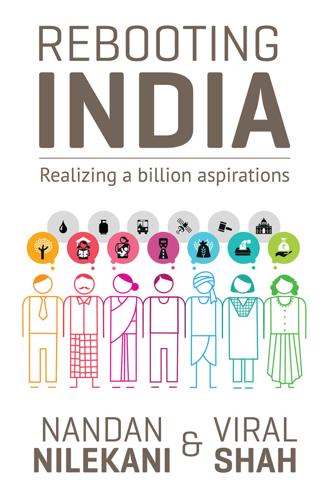
Rebooting India: Realizing a Billion Aspirations
by
Nandan Nilekani
Published 4 Feb 2016
The winds of liberalization brought in a new mindset for India’s people; no longer content to plough the same furrow that their forefathers had before them, their ambitions began to grow. They wanted a system that would support their efforts to climb out of poverty and ensure a brighter future for themselves and their children. India is sitting on a demographic dividend and is expected to become the world’s youngest country by 2020, with 64 per cent of its population, roughly 800 million people, of working age.10 That is 800 million knocks on the ceiling with a list of demands that include education, employment, good health, better infrastructure, efficient governance and a corruption-free society.
…
Hindustan Times. http://www.hindustantimes.com/india/slum-gods/story-QBMRbH33hPfZnBkVlVo81I.html 10. Press Trust of India. 15 March 2012. ‘Economic Survey 2011–12: India to join league of youngest nations by 2020’. Economic Times. http://articles.economictimes.indiatimes.com/2012-03-15/news/31197250_1_demographic-dividend-economic-survey-life-expectancy 11. World Bank Group. Ease of doing business rankings. http://www.doingbusiness.org/rankings 12. Micklethwait, J., and Wooldridge, A. 2014. The Fourth Revolution: The Global Race to Reinvent the State. Penguin Books. 13. Guha, Ramachandra. 2007. India After Gandhi: The History of the World’s Largest Democracy.
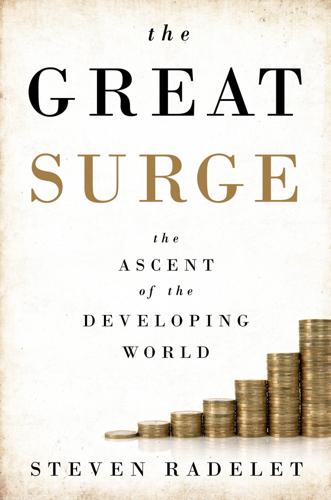
The Great Surge: The Ascent of the Developing World
by
Steven Radelet
Published 10 Nov 2015
China also is moving slowly from importing other countries’ technologies to becoming more of an innovator in developing technologies itself—an important shift for long-term growth, but one that tends to translate into slower growth rates, since this is harder and more costly than simply adopting someone else’s ideas. Third, China’s changing demography will begin to work against it. Over the last few decades, China has enjoyed the benefits of a “demographic dividend.” A large share of its population has been of working age, with a smaller share of children and senior citizens. Economic growth is faster when more people are working and there are fewer nonworking dependents. As China’s population ages, there will be fewer workers relative to dependents.
…
Henry), 97 Cairo, 206, 216 California, 281 call centers, 56, 178, 262 Cambodia, 11, 36, 106, 114, 159 camels, 152 Cameroon, 281 Canada, 47, 210, 231 Cape Town, University of, 247 capitalism, 122, 146, 147–48, 149, 156, 162, 163, 250, 264, 303 in Asia, 155–57 Capital in the Twenty-First Century (Piketty), 68–69 capital markets, 164 carbon dioxide, 278, 282 carbon emissions, 297 Cardoso, Fernando, 186–87 Caribbean, 36 Carnation Revolution, 105 Carothers, Thomas, 112 Case Studies in Global Health, 214 cash transfer programs, 38 cassava, 171, 215 Castro, Fidel, 100, 144 Catholicism, 120–21, 123 cattle plague, 215 CD4 cell count, 175 Ceauşescu, Nicolae, 143 Center for Global Development, 298 Center for Systemic Peace, 107 Centers for Disease Control and Prevention (CDC), US, 210 Central Africa, 205 Central African Republic, 49, 50, 222 Central America: crime in, 264 megacities in, 277 wars in, 81, 141 Central Asia, 36, 141, 147 Central Bank, Gambia, 190 Central Military Commission, 134 Chad: child mortality in, 84 health improvements in, 93 as landlocked, 205 war in, 145 Chandy, Laurence, 42, 243–44 Chavez, Hugo, 113 Chen, Shaohua, 27, 29 Chernenko, Konstantin, 134 Chernobyl nuclear power plant, 134 childbirth, 74, 75–82 child mortality, 24, 72–96, 74, 85, 93, 246 Chile, 47, 127 coup in, 100 democracy in, 104, 123 growth in, 6, 7, 45, 128, 147 individual leadership in, 187 life expectancy in, 78 malaria in, 210 Pinochet’s rule in, 107–8, 122, 141, 143–44 trade encouraged by, 155 Chiluba, Frederick, 133 China, ix–x, 3, 7, 20, 22, 106, 126, 144, 203, 292, 298, 300 authoritarian capitalism in, 147, 265–66 Coca-Cola in, 46 in confrontations with neighbors, 273 demand in, 53 demographic dividend in, 236 and dictatorships, 222 emigration from, 284 exploration by, 151–53 exports from, 154 future of, 234, 249–52 growth in, 6, 8–9, 15, 17, 21, 35–36, 45, 50, 62, 71, 125, 128, 147, 154, 201, 232, 233, 235–37, 242, 269 health in, 201 income in, 201 individual leadership in, 187 inequality in, 66, 69–70 infrastructure financing in, 259–60 innovation and technology in, 154–55, 302 market reforms in, 35, 102, 134–35, 192 natural capital in, 63 opening of, 5 per capital income in, 153 pollution in, 62 poverty reduction in, 201, 244 savings and investment in, 235 slowdown in growth of, 235–37, 249, 255, 257, 293 universities in, 247 US relationship with, 298–99 cholera, 77 Chun Doo-hwan, 99 Churchill, Winston, 97 civil liberties, 99, 199 civil rights, 112 civil servants, 102 civil war, 7 in Africa, 12 decline in, 115–16, 116 Civil War, US, 142 Clemens, Michael, 225 climate change, 4, 9, 19, 21, 63, 233, 234, 256, 272–73, 278, 281–84, 285–86, 296–97, 301, 305 coal, 44, 53, 278 Coca-Cola, 46, 159 cocoa, 163, 189 Cold War, 4, 7, 11, 16, 44, 52, 81, 100, 103, 115, 116, 131, 135, 144, 145, 146, 150, 156, 183, 184, 214, 223 Collier, Paul, 14–15, 118, 188, 202, 205, 213, 217, 227, 292, 303 Collins, Daryl, 32, 33–34 Collor de Mello, Fernando, 186 Colombia, 22, 237 data entry firms in, 178 universities in, 247 colonialism, 43–44, 52, 140, 147, 148, 149, 156 and independence, 140–43 of Indonesia, 136–40 Columbus, Christopher, 152 Coming Anarchy, The (Kaplan), 11 Commission on Growth and Development, 86, 165–66, 188 commodities, 53–57, 55, 163 Communism, 4, 11, 124, 125, 135, 139, 143, 146, 147, 149, 150, 184, 250 demise of, 16, 183 Communist Party, China, 123, 138, 250 Communist Party, Indonesia, 138 Communist Party, Soviet, 133, 138 comprehensive capital, 62–63 conflict, see violence Confucianism, 122 Congo, 114, 144, 185, 213, 243, 285 child mortality in, 84 civil war in, 181, 206 coup in, 100 education in, 190 lack of growth in, 50 war in, 81 Congress, US, 298 construction, 37, 45 consumption, 40–41, 40 Contingent Reserve Arrangement, 259 contract enforcement, 261 Converse, Nathan, 198 copper, 53 corn, 162, 281 corruption, 112, 261, 264 in Brazil, 186 in Thailand, 254 in US, 142 Costa Rica, 18, 58, 159 aid to, 223 as democracy, 7, 98, 123 growth in, 50 costume jewelry, 56 Côte d’Ivoire, 163, 263 cotton, 25 creative destruction, 249 Cuba, 22, 141, 145 and democracy, 248 dictatorship in, 100, 106, 144 Cultural Revolution, 35, 128, 153, 185 currencies, and resource curse, 206 Cuyamel Fruit Company, 97–98 Czechoslovakia, 143 protests in, 134 Velvet Revolution in, 103 Czech Republic, 184 da Gama, Vasco, 152 dairy products, 280 Darfur, 8, 10, 206 Dasgupta, Partha, 62–63 data entry firms, 178 Davies, Sally, 267 DDT, 212 Deaton, Angus, 89, 213 debts, 11, 193 in Africa, 12 deficits, 101 dehydration, 94, 173 de Klerk, F.
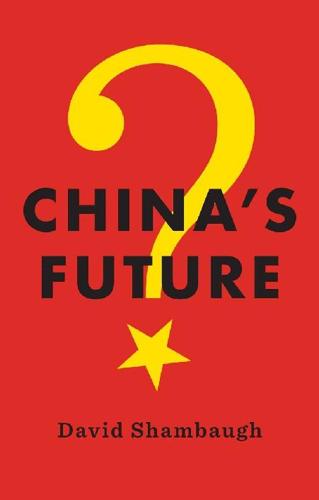
China's Future
by
David Shambaugh
Published 11 Mar 2016
China’s low fertility rate (1.7) is now below the replacement level and assures continually declining numbers of new entrants into the labor force, despite the loosening of the one-child policy restrictions in 2013 and its abolition in 2015. The situation is stark and the implications serious for China. The “demographic dividend” is over. As demographer Wang Feng of the University of California–Irvine aptly describes the situation, “The aging of China’s population represents a crisis (emphasis added) because its arrival is imminent and inevitable, because its ramifications are huge and long-lasting, and because its effects will be hard to reverse.

Numbers Don't Lie: 71 Stories to Help Us Understand the Modern World
by
Vaclav Smil
Published 4 May 2021
Many Indian emigrants have risen to leadership in Silicon Valley: Sundar Pichai at Google, Satya Nadella at Microsoft, Shantanu Narayen at Adobe, and Sanjay Jha, the former CEO of GlobalFoundries, to name the most prominent ones. It will be fascinating to see to what extent India can replicate China’s economic success. And China, for its part, must cope with its loss of the demographic dividend: since 2012, its dependency ratio—the number of people of working age divided by the number of those who are too young or too old to work—has been rising (it is now just over 40 percent). The question is whether the country will become old before it can become truly rich. Both countries have enormous environmental problems and both will be challenged to feed their populations—but India has about 50 percent more farmland.
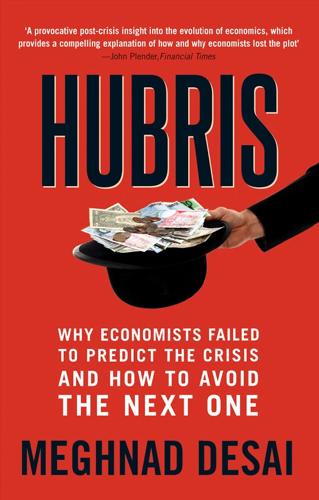
Hubris: Why Economists Failed to Predict the Crisis and How to Avoid the Next One
by
Meghnad Desai
Published 15 Feb 2015
For one thing, the global economy has many more growth poles than it had when only the developed countries were the focus of the study of cycles. The EEs are still growing at a respectable pace – China at 7 percent. India has slowdown in growth but is expected to bounce back to its previous rate of around 7–8 percent and may grow even faster if it uses its demographic dividend. Indonesia, Vietnam, Mexico and Malaysia are all still growing strongly. In the first decade of the twenty-first century, sub-Saharan Africa has seen many economies growing at a good rate. Nigeria, Ghana, Kenya, Mozambique and Mauritius are averaging 5 percent per annum. There is a lot of potential there.
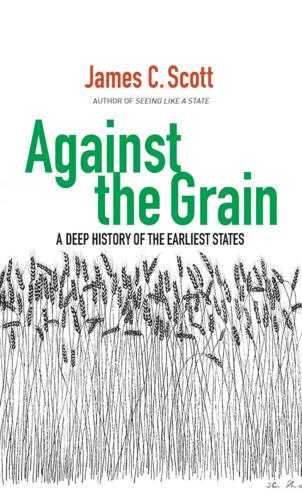
Against the Grain: A Deep History of the Earliest States
by
James C. Scott
Published 21 Aug 2017
Providing that slaves were constantly being acquired, such societies would remain slave societies, but, viewed over several generations, earlier captives would have become nearly indistinguishable from their captors. Women captives were at least as important for their reproductive services as for their labor. Given the problems of infant and maternal mortality in the early state and the need of both the patriarchal family and the state for agrarian labor, women captives were a demographic dividend. Their reproduction may have played a major role in alleviating the otherwise unhealthy effects of concentration and the domus. Here I cannot resist the obvious parallel with the domestication of livestock, which requires taking control over their reproduction. The domesticated flock of sheep has many ewes and few rams, as that maximizes its reproductive potential.

No Ordinary Disruption: The Four Global Forces Breaking All the Trends
by
Richard Dobbs
and
James Manyika
Published 12 May 2015
Since 1991, India’s GDP per capita has increased nearly fivefold, the nation’s foreign exchange reserves have increased nearly fiftyfold, and annual foreign direct investment inflows have surged by a factor of 200.3 Future prospects look no less bright. Estimates are that India will rise from the tenth-largest economy in the world in 2013 to the third largest by 2030.4 India’s young and rapidly urbanizing population could become the country’s “demographic dividend,” fueling growth and prosperity over the decades to come. By 2030, India could have an urban population of approximately six hundred million, nearly twice that of the entire United States as of this writing. India will be home to two of the world’s five most populous cities, along with sixty-eight other cities of more than one million inhabitants each.5 But unless India significantly steps up investment in its cities, the infrastructure deficit may wipe out urbanization’s productivity dividend.

How to Prevent the Next Pandemic
by
Bill Gates
Published 2 May 2022
,” https://www.gapminder.org; Our World in Data, “Where in the World Are Children Dying?,” https://ourworldindata.org/. GO TO NOTE REFERENCE IN TEXT It happened in France: Bill and Melinda Gates Annual Letter, 2014, https://www.gatesfoundation.org/. GO TO NOTE REFERENCE IN TEXT As the United Nations Population Fund explains: “Demographic Dividend,” https://www.unfpa.org/. GO TO NOTE REFERENCE IN TEXT It raised almost $4 billion: The Global Fund, “Our COVID-19 Response,” https://www.theglobalfund.org (accessed Dec. 2021). GO TO NOTE REFERENCE IN TEXT Even though about a sixth: WHO, “Tuberculosis Deaths Rise for the First Time in More Than a Decade Due to the COVID-19 Pandemic,” Oct. 14, 2021, https://www.who.int.

Earth Wars: The Battle for Global Resources
by
Geoff Hiscock
Published 23 Apr 2012
And, the economists argue, if fundamental human rights and the rule of law are lacking, can any nation claim to be a winner? Plus, there is a sting in the tail of China’s urban one-child policy. This is a complex and controversial issue, but essentially since the late 1970s, the policy has saved China from having to feed an extra 400 million mouths. Now that demographic dividend might be turning against it, as fertility falls and the population ages. Consumer demand is rising, of course, but a society without siblings is likely to be a sorry situation. In contrast, by rights, India’s democracy, demography, and dynamic diaspora should deliver it a large chunk of economic good fortune over the next few decades.

Growth: From Microorganisms to Megacities
by
Vaclav Smil
Published 23 Sep 2019
During the opening decades of their demographic transitions, the growth rates of income per capita were similar (ranging between 1.2 and 1.6%) in western European countries despite the just noted substantial differences in the income level. An important consequence of the demographic transition has become known as the demographic dividend, first identified in the East Asian economies (Bloom et al. 2000). The boost to economic growth is provided by a combination of improved child health (higher survival rates in the first benefiting cohort followed by fewer children in the next), increased human capital resulting from better health and better education of the surviving children, and an increased labor supply as low fertility allows higher female labor participation.
…
Kondratieff Waves in the World System Perspective. Cham: Springer International. Gross, J. 2004. A Normal Distribution Course. Bern: Peter Lang. Grossman, G. M., and E. Helpman. 1991. Trade, knowledge spillovers, and growth. European Economic Review 35:517–526. Groth, H., and J. F. May, eds. 2017. Africa’s Population: In Search of a Demographic Dividend. Berlin: Springer. Grübler, A. 1990. The Rise and Fall of Infrastructures: Dynamics of Evolution and Technological Change in Transport. Heidelberg: Physica. GSMArena. 2017. All mobile phone brands. http://www.gsmarena.com/makers.php3. Gündüz, G. 2002. The nonlinear and scaled growth of the Ottoman and Roman empires.
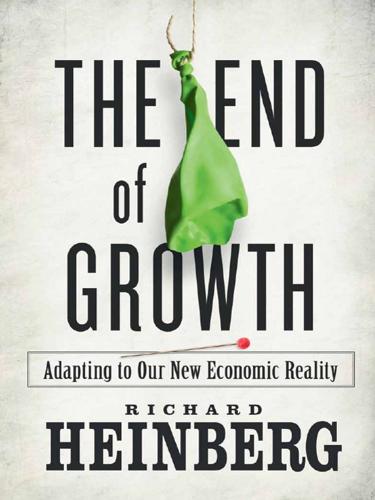
The End of Growth: Adapting to Our New Economic Reality
by
Richard Heinberg
Published 1 Jun 2011
Since World War II, eight countries (Tunisia, Japan, South Korea, Singapore, Taiwan, Barbados, Hong Kong, and Bahamas) have achieved the shift from being listed as “developing” to “developed” by first bringing fertility down through strong family planning programs. Once fewer children were being born, families found that they had money left over after paying for basic necessities, and this led to capital formation through personal savings. Demographers call this the “demographic dividend.” The continent of Africa will probably encounter the worst demographic challenges of any region in the decades ahead. Its population is expected to double its numbers by 2050, according to the UN. By then, Africa’s urban population may have tripled, with 1.3 billion living in cities. These trends of rapid population growth and rapid urbanization cannot be sustained in a world of declining energy, scarce water, and changing climate, and will soon become enormous liabilities as today’s quickly growing slums turn into centers of even greater human misery.

Creative Intelligence: Harnessing the Power to Create, Connect, and Inspire
by
Bruce Nussbaum
Published 5 Mar 2013
A second Dream:IN conference was held in Brazil, Carlos’s home country, in the summer of 2012, http://www.fastcodesign.com/1663223/looking-to-realize-dreams-in-india-with-new-business-models. 75 “More education” was probably the most: I was present in India, participating at the Dream:IN conference, when the major themes were presented after the video narratives were collected and collated. 76 They already have $50,000: Sonia Manchanda, interview with author, autumn 2011. 76 a country where more than 65 percent: Kaushik Basu, “India’s Demographic Dividend,” BBC News, July 25, 2007, accessed September 10, 2012, http://news.bbc.co.uk/2/hi/south_asia/6911544.stm. 77 Keith Richards and Mick Jagger: Keith Richards and James Fox, Life (New York: Little, Brown and Company, 2010). 77 Today, the business degree: National Center for Education Statistics, Fast Facts, http://nces.ed.gov/fastfacts/display.asp?
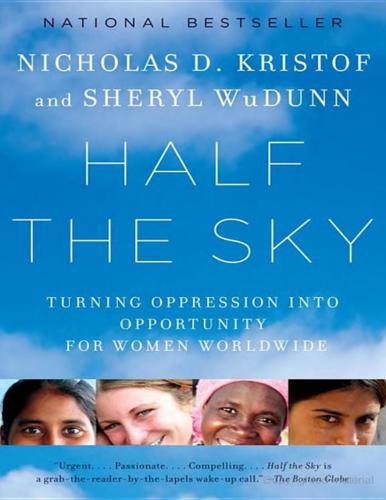
Half the Sky: Turning Oppression Into Opportunity for Women Worldwide
by
Nicholas D. Kristof
and
Sheryl Wudunn
Published 7 Sep 2008
These countries took young women who previously had contributed negligibly to gross national product (GNP) and injected them into the formal economy, hugely increasing the labor force. The basic formula was to ease repression, educate girls as well as boys, give the girls the freedom to move to the cities and take factory jobs, and then benefit from a demographic dividend as they delayed marriage and reduced childbearing. The women meanwhile financed the education of younger relatives, and saved enough of their pay to boost national savings rates. This pattern has been called “the girl effect.” In a nod to the female chromosomes, it could also be called “the double X solution.”

Age of Discovery: Navigating the Risks and Rewards of Our New Renaissance
by
Ian Goldin
and
Chris Kutarna
Published 23 May 2016
Several, but certainly not all, of its countries enjoy resource wealth (40 percent of the world’s gold and 90 percent of its platinum are in Africa), which, in the hands of good governments, could be invested in public infrastructure and skills. And good government is better understood: citizens know their rights much better and are holding those in power accountable with ever-rising frequency.98 Africa is also blessed with a looming demographic dividend. Its working-age population will balloon from 500 million people now to over 1.1 billion by 2040.99 If local governments can learn how to foster neighborhoods instead of slums, and if national governments can better integrate their too-small economies and build better institutions, Africans might banish extreme poverty from their midst before mid-century.

Whole Earth Discipline: An Ecopragmatist Manifesto
by
Stewart Brand
Published 15 Mar 2009
Before 2009, everyone marveled at China’s 10 percent annual growth; but India had 8 percent, and Africa—no longer the basket case people think it is—had 7 percent, led by South Africa. In 2007 the U.S. economy grew by 2.2 percent, France’s grew by 1.8 percent, and Japan’s grew by 1.9 percent. It will be interesting to see who recovers first and fastest following the economic disruptions of 2009. The nations of the global south are coming into their demographic dividend. The new millions of young adults live in cities, voting with their ovaries for fewer children and more opportunity. They are mostly of working age, burdened by relatively few infants and elderly dependents. “Poor countries with low and falling fertility rates are growing wealthier faster than rich modern countries,” wrote Ben Wattenberg in his 2004 book on depopulation, Fewer.
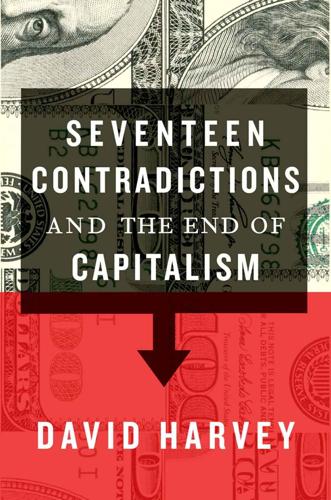
Seventeen Contradictions and the End of Capitalism
by
David Harvey
Published 3 Apr 2014
Early on in capital’s history, rapid population growth or a vast reserve of untapped and yet-to-be urbanised wage labour unquestionably helped to fuel rapid capital accumulation. Indeed, a plausible case can be made that population growth from the early seventeenth century on was a precondition for capital accumulation. The role of what Gordon calls ‘the demographic dividend’ in fostering economic growth was clearly important in the past and continues to be so. The vast inflow of women into the labour force in North America and Europe after 1945 is one case in point, but this is something that cannot be repeated. The world’s labour force expanded by 1.2 billion between 1980 and 2009, nearly half of that growth coming from India and China alone.

Human Frontiers: The Future of Big Ideas in an Age of Small Thinking
by
Michael Bhaskar
Published 2 Nov 2021
The CEOs of world-leading companies like Microsoft, Alphabet, Adobe and IBM are Indian. India implemented technology at scale like Aadhaar, the world's largest biometric identity card system built on iris recognition software, and is now looking at a suite of digital services, IndiaStack, built on top of it. What's more, India still reaps a demographic dividend no longer available to an ageing China. In the years to 2025, 170 million will join the Indian labour force.21 In the 2010s India embarked on a major process of renewal, focusing on infrastructure and regulation. It wants, like China, to grow not just first-tier cities, but to establish ‘second-tier’ cities on the leading edge; Pune, Hyderabad, and the girdle of towns around Delhi are already there.
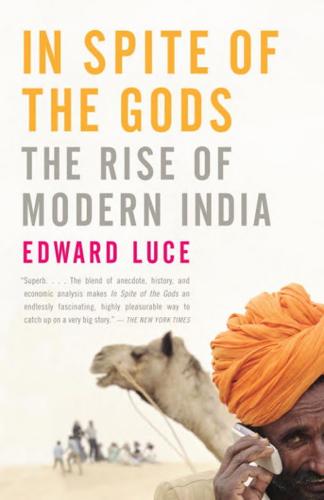
In Spite of the Gods: The Rise of Modern India
by
Edward Luce
Published 23 Aug 2006
From 2010, China’s dependency ratio—the proportion of the working-age population to the rest—will start to deteriorate. In contrast, India’s dependency ratio will continue to improve until the 2040s.34 In the next twenty years, the proportion of dependents to workers will fall from 60 percent of the population to 50 percent. This will give India’s economy a large “demographic dividend.” It is commonplace to say a nation’s future lies in its youth. But India’s future also lies in its youthfulness. The higher the proportion of the population that is of working age, the higher the rate of savings in the economy. A higher savings ratio boosts investment, which lifts economic growth in a virtuous circle that for India stretches almost as far as the eye can see.
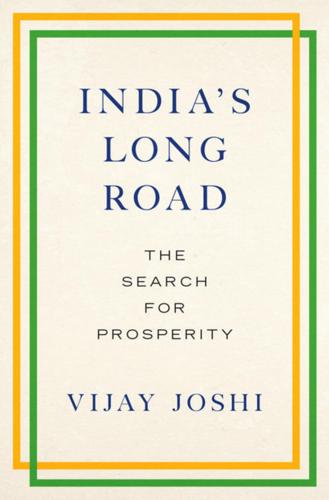
India's Long Road
by
Vijay Joshi
Published 21 Feb 2017
Chapter 4 begins with an introduction to the sources of growth in India, and proceeds to examine one of these, viz. capital accumulation, and the ‘animal spirits’ that drive it. Chapter 5 analyzes India’s ‘employment problem’ and how it [ 10 ] Setting the Stage 11 should be tackled to speed up growth by harnessing the so-called ‘demographic dividend’. Chapter 6 ranges widely over the distortions in the economy that are holding back productivity improvement, and the corrective measures required. Chapter 7 examines productivity growth in relation to public and private ownership, with particular attention to the infrastructure sectors. It also considers the problem of making growth environmentally sustainable.
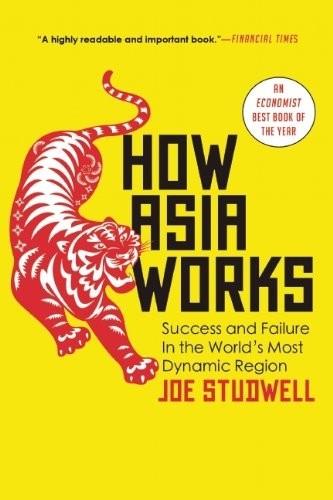
How Asia Works
by
Joe Studwell
Published 1 Jul 2013
Rapidly declining death rates – particularly for children – and rapidly rising working-age populations have been a big part of the east Asian developmental story since the Second World War. These demographic trends, largely the result of advances in medicine and sanitation, have facilitated unprecedented growth. The phenomenon is sometimes referred to as the ‘demographic dividend’. The flip side of this dividend is that it is followed by the faster ageing of populations – by which we really mean the increase of retired people relative to workers. After a tipping point, workforces start to shrink quickly, and older people consume their savings, devouring what were previously funds for investment.
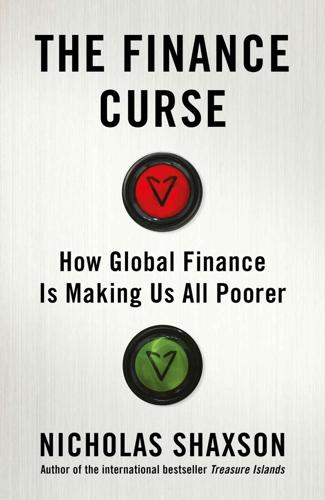
The Finance Curse: How Global Finance Is Making Us All Poorer
by
Nicholas Shaxson
Published 10 Oct 2018
The economic benefits were immense.19 Adding further to the workforce was a flood of Irish jobseekers who had fled the country in previous bad economic times, been educated and trained at other countries’ schools and universities, and were now returning home to join the boom. All this helped transform the Irish economy from a position where in 1986 every ten workers supported twenty-two people too young, old or sick to work, to a ratio of ten workers to just five dependants by 2005. This was a revolutionary demographic dividend.20 The IDA designed a dazzling new marketing campaign to capitalise on this shift, with the slogan ‘Ireland – We’re the Young Europeans.’ They ran splashes in The Economist, the Wall Street Journal and Business Week. ‘People are to Ireland as oil is to Texas,’ one advertisement went, accompanied by a photo of smiling male and female graduates on campus.

Thank You for Being Late: An Optimist's Guide to Thriving in the Age of Accelerations
by
Thomas L. Friedman
Published 22 Nov 2016
In hindsight, the period from World War II up to the fall of the Berlin Wall was “an incredible period of economic moderation,” argued James Manyika, one of the directors of the McKinsey Global Institute. And economic moderation drove political moderation and stability. It made inclusion and immigration easier to tolerate. Most countries were also still benefiting from improved health care and decreased child mortality, producing a demographic dividend of bulging youth populations and relatively few older people to take care of. This made more generous pensions easier to handle in many countries. And most countries had not eaten through their natural capital. All in all, it was relatively easy to be an “average” democracy or autocracy during the Cold War and even into the post–Cold War period.